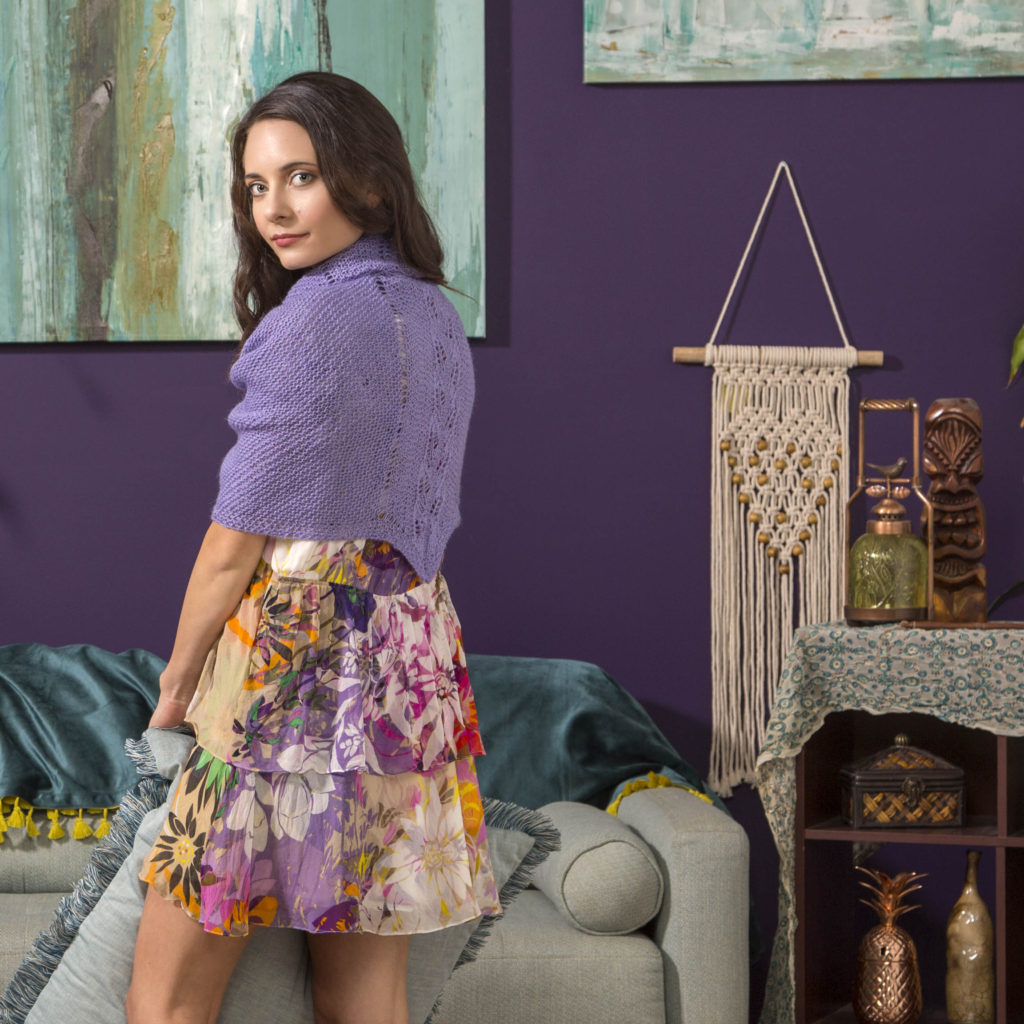
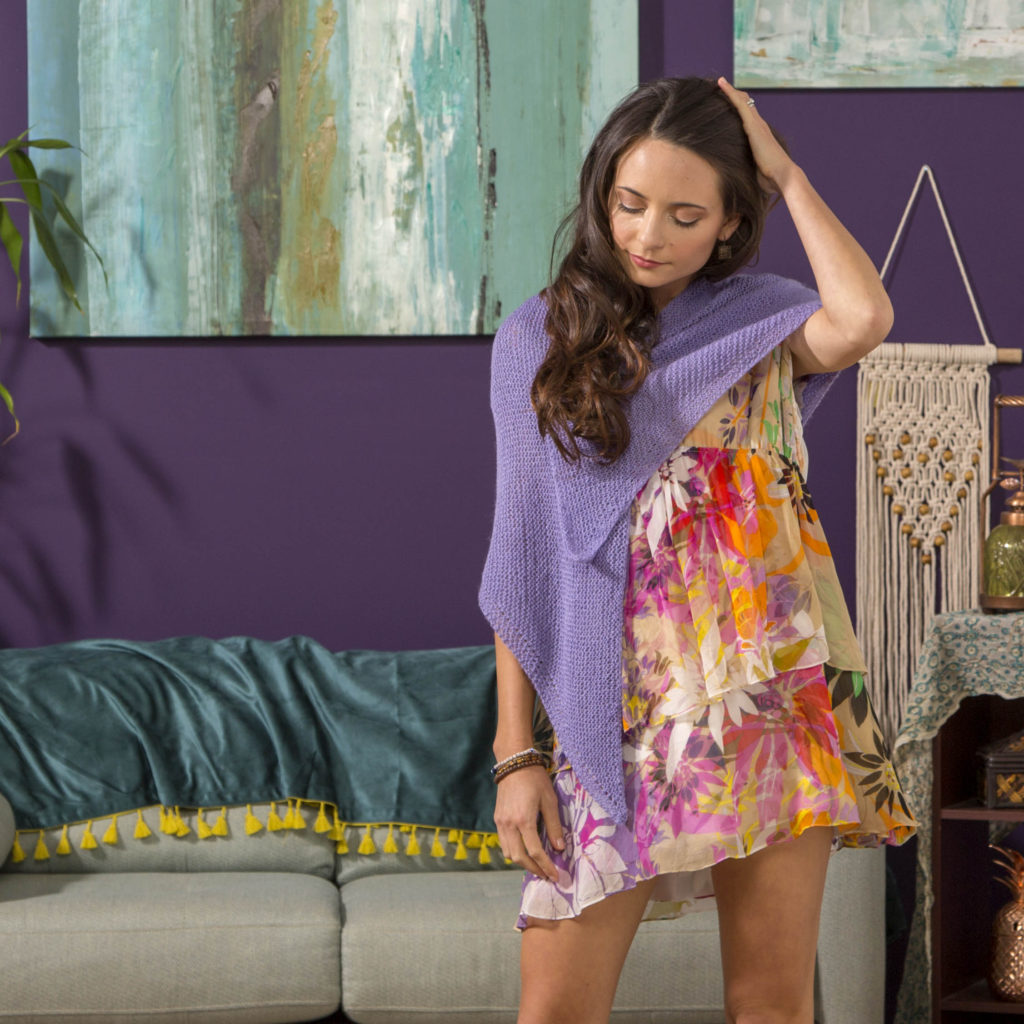
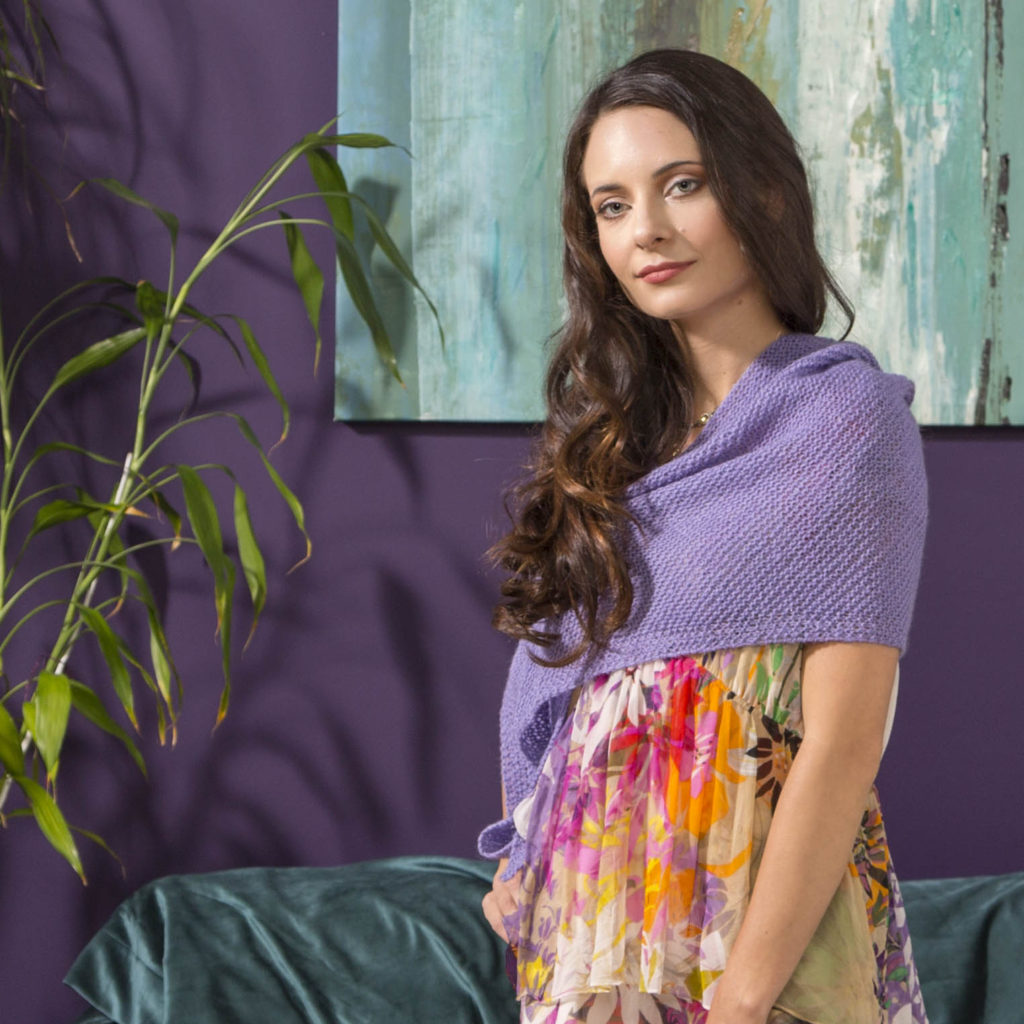
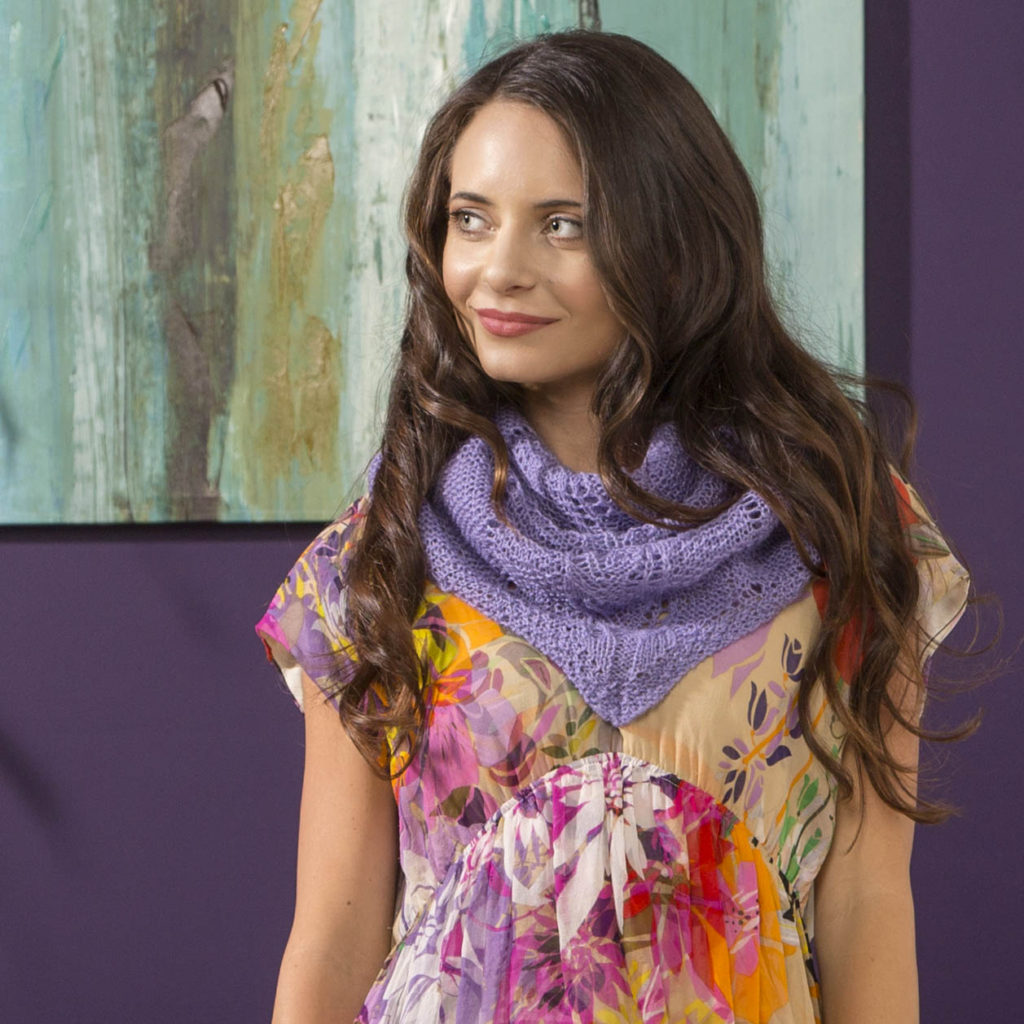
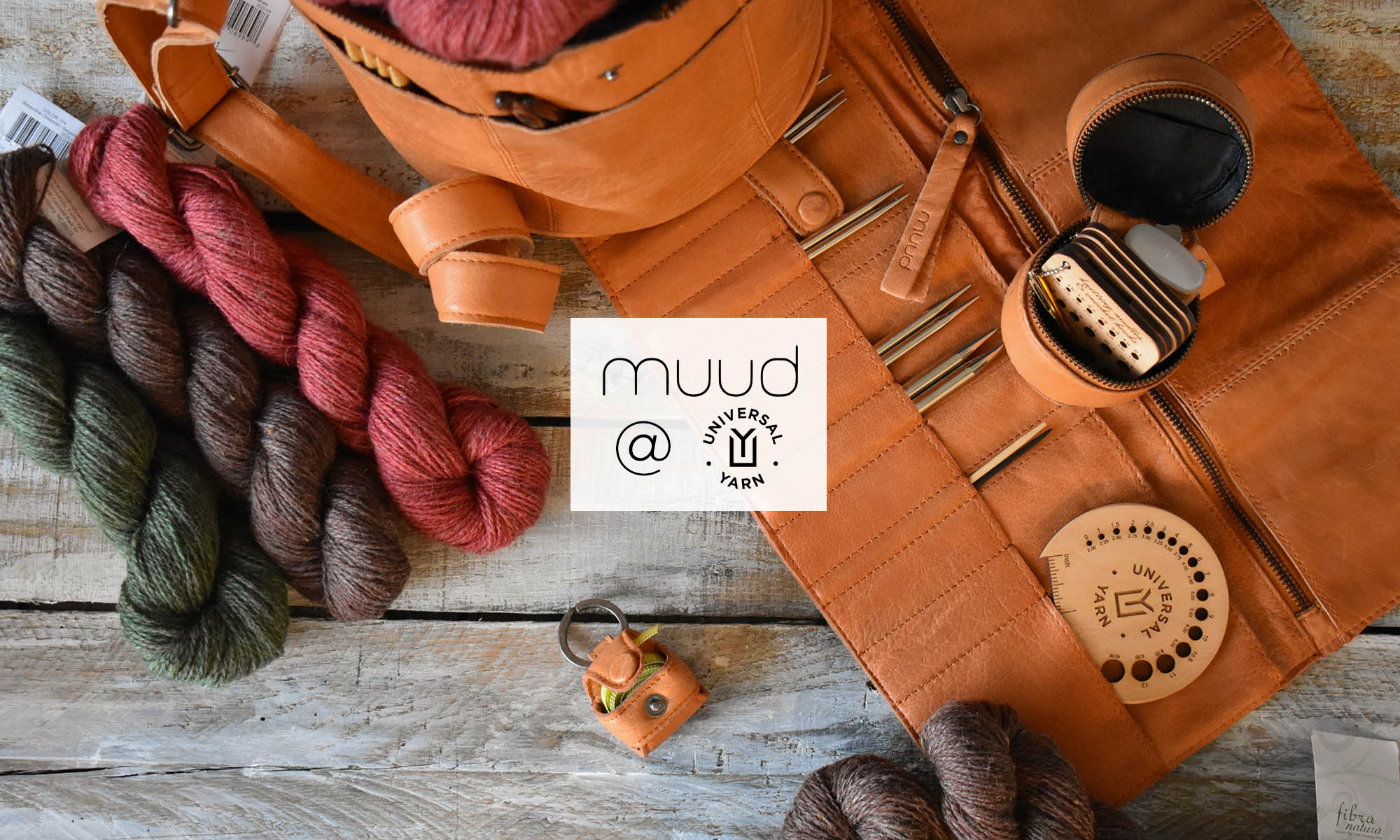
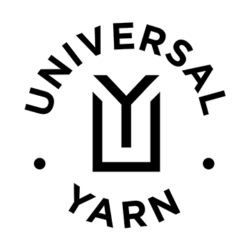
Universal Yarn Creative Network
Inspiration By Design




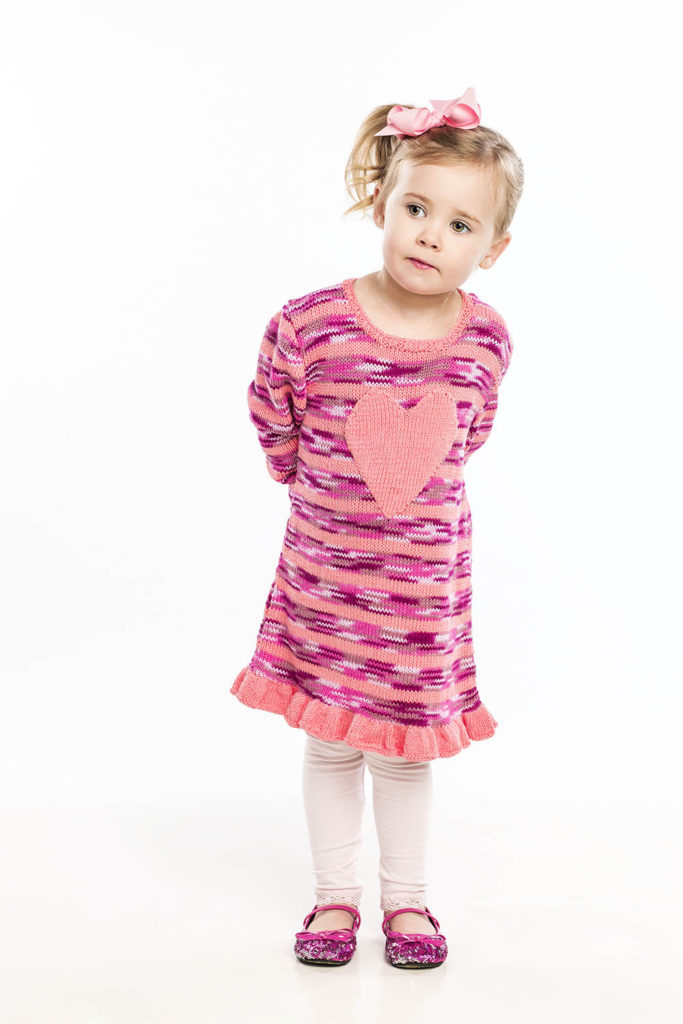
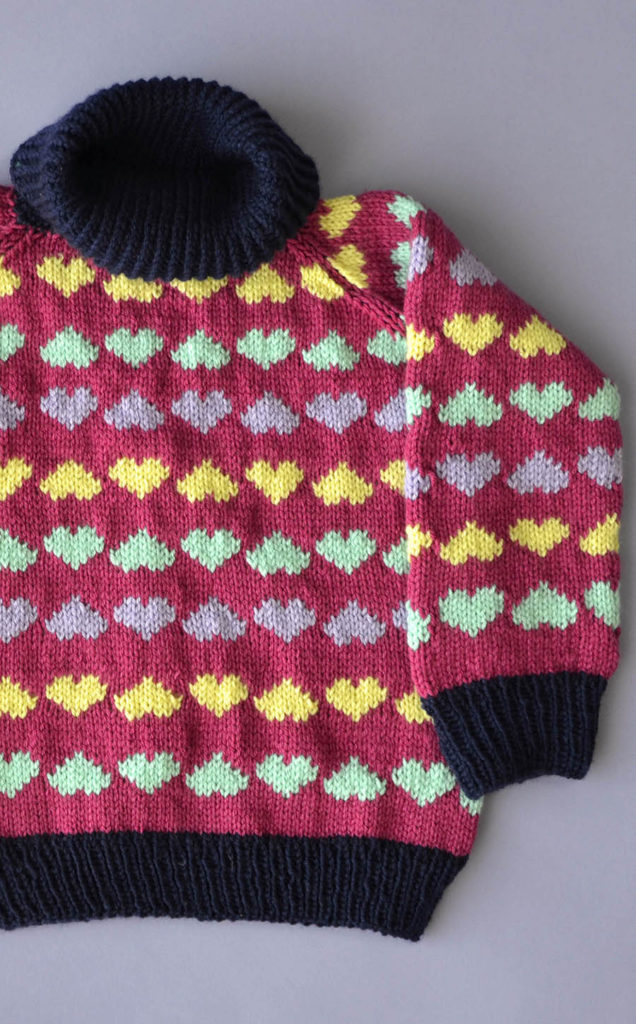
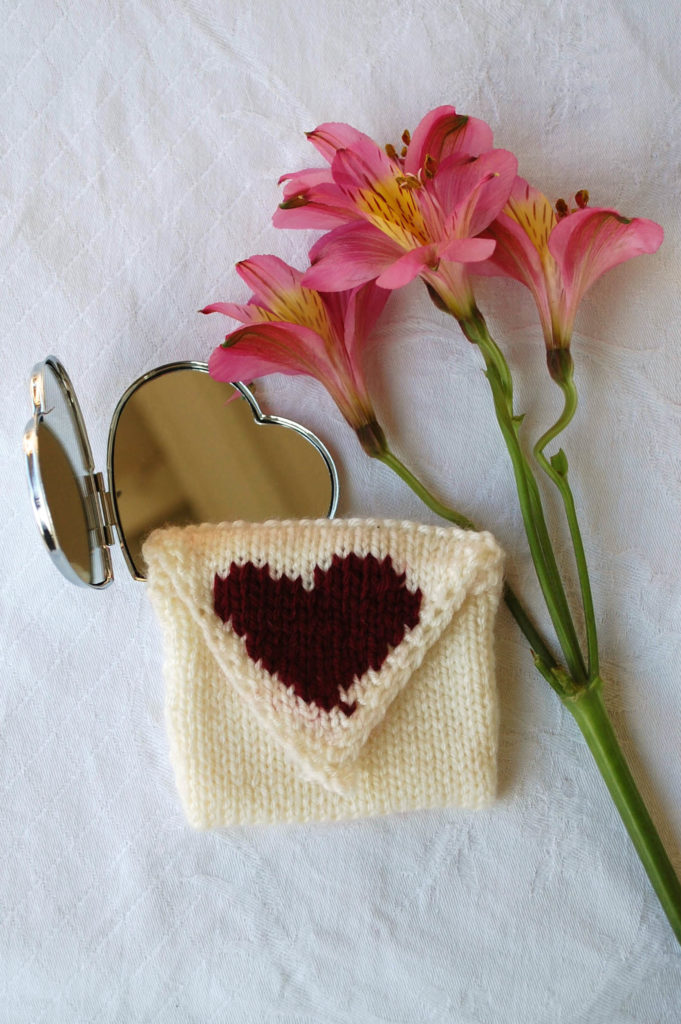
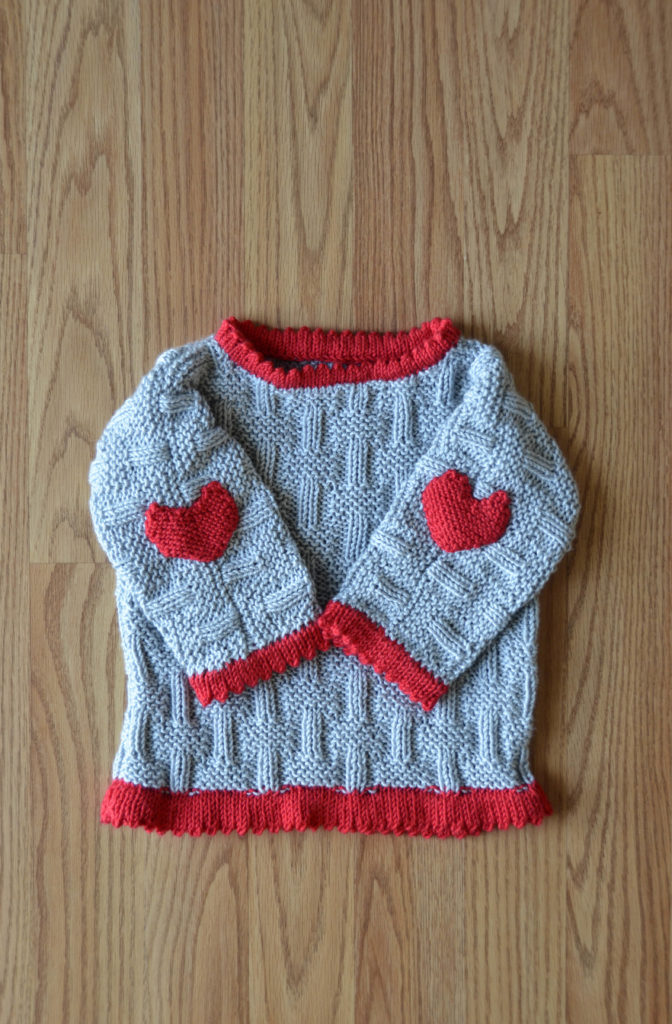
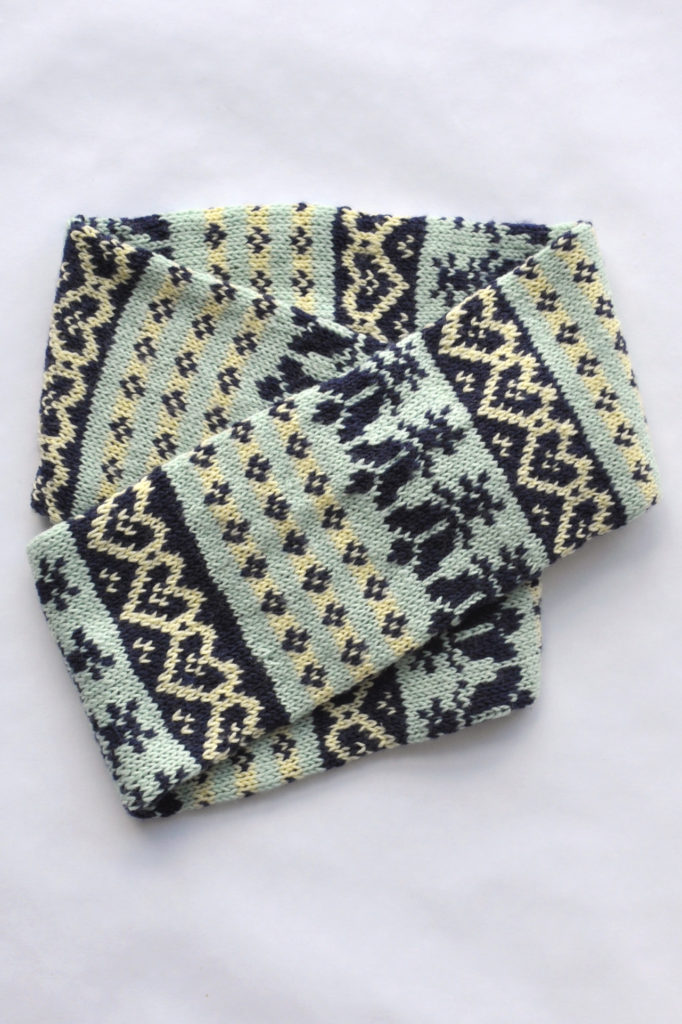
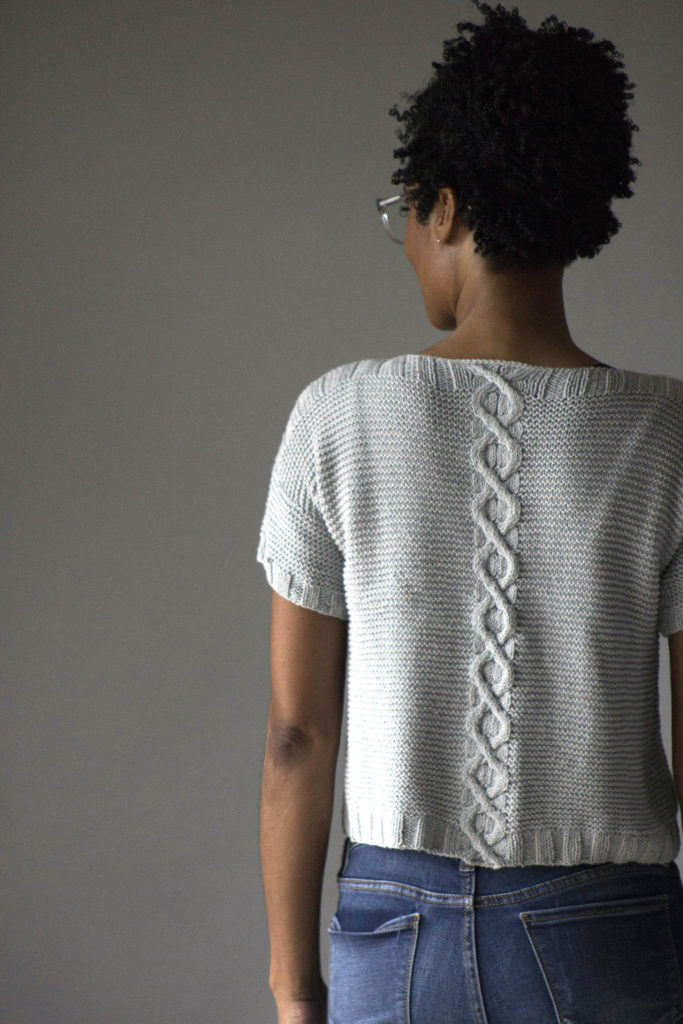
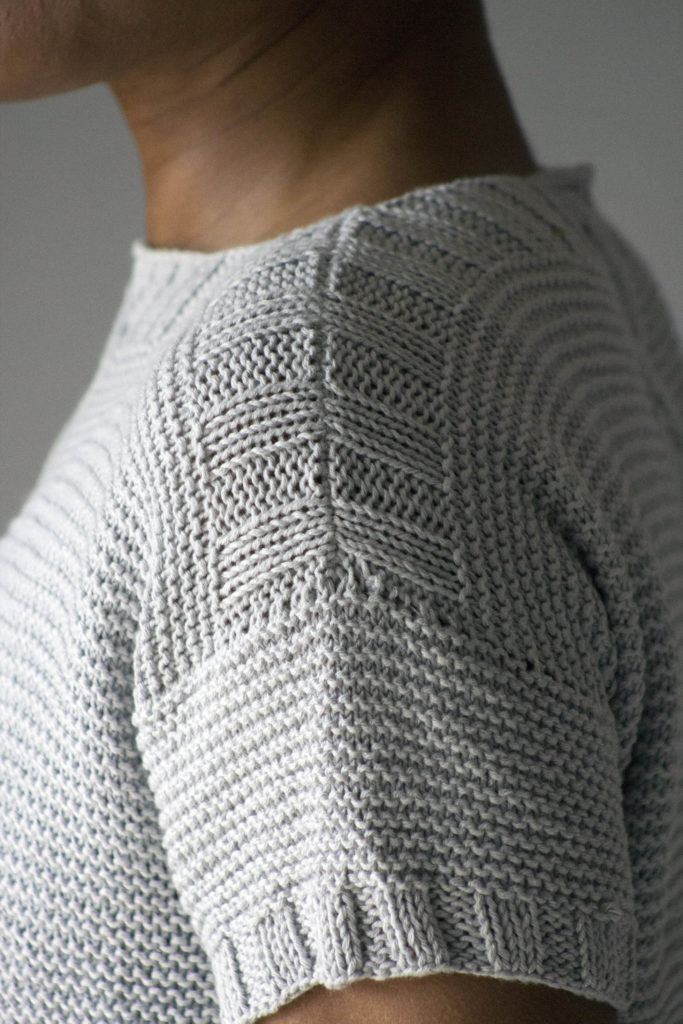
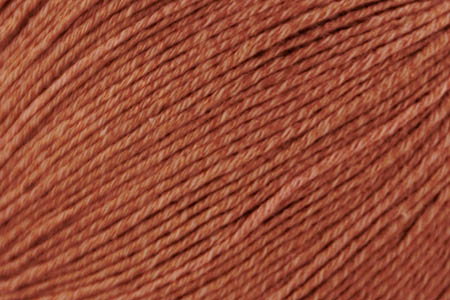
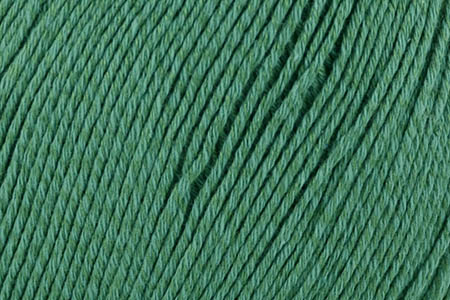
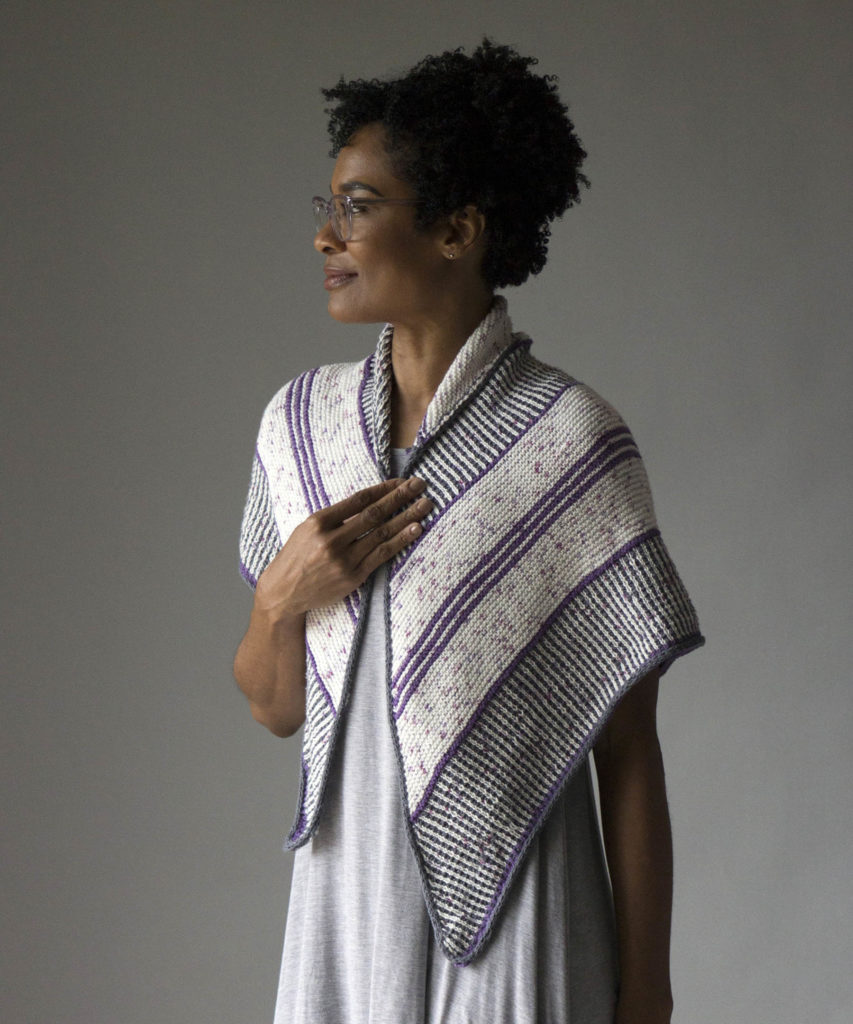
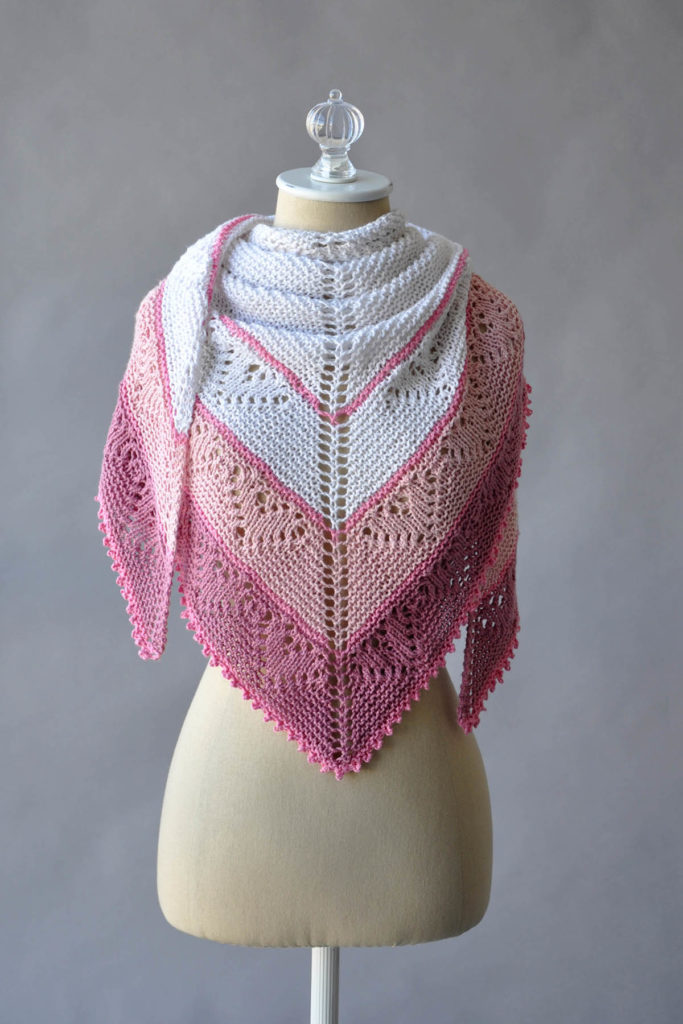
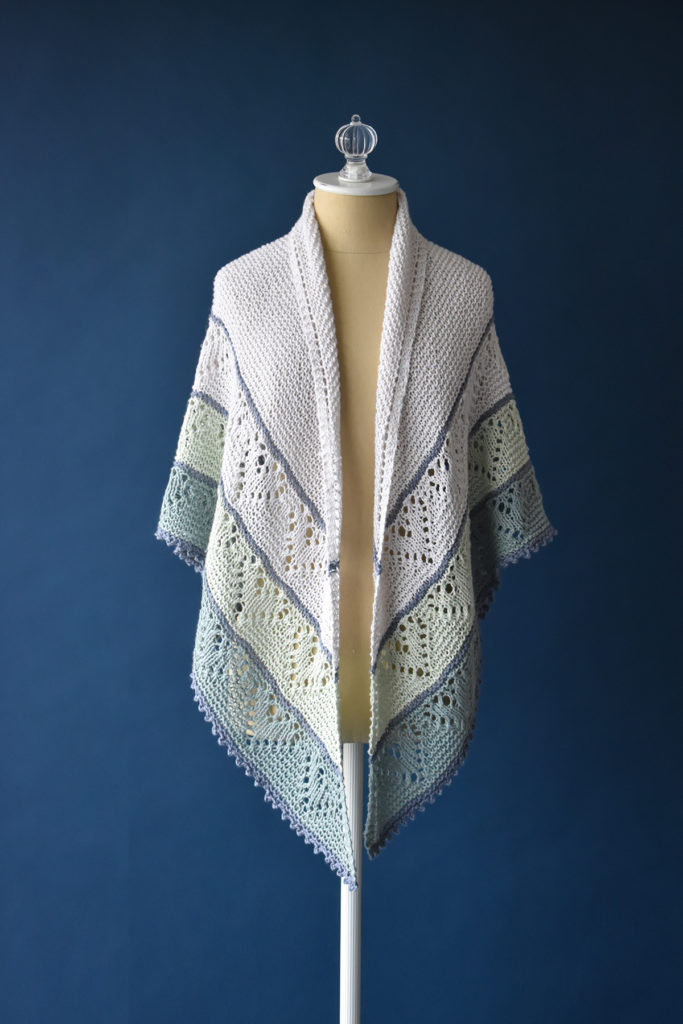
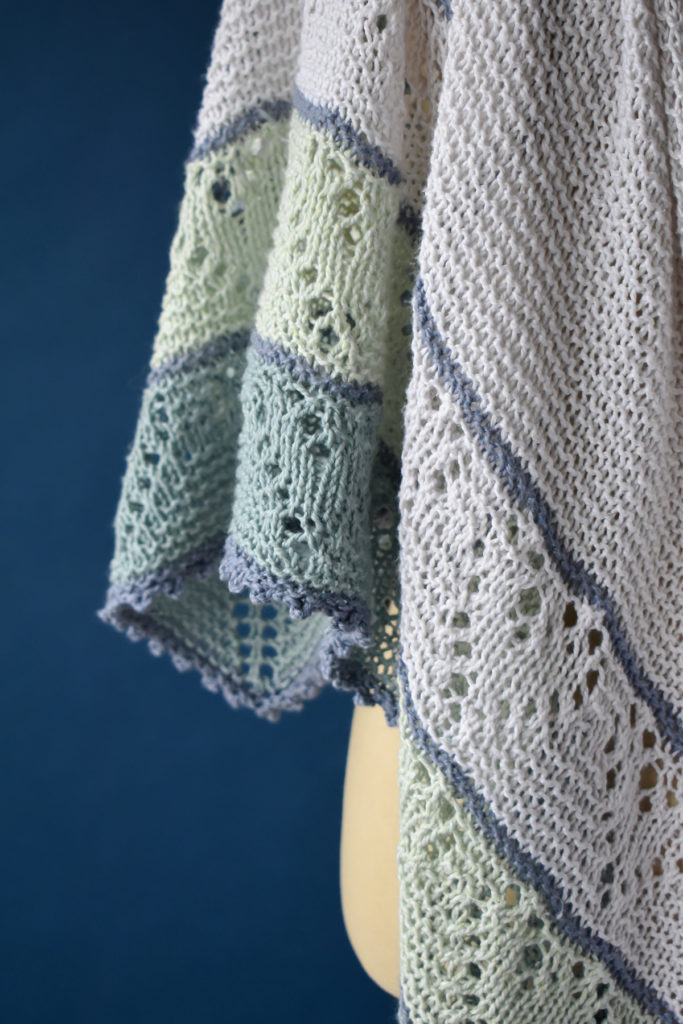
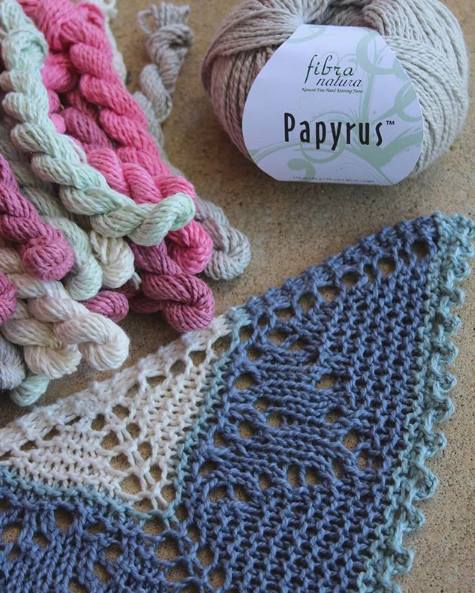
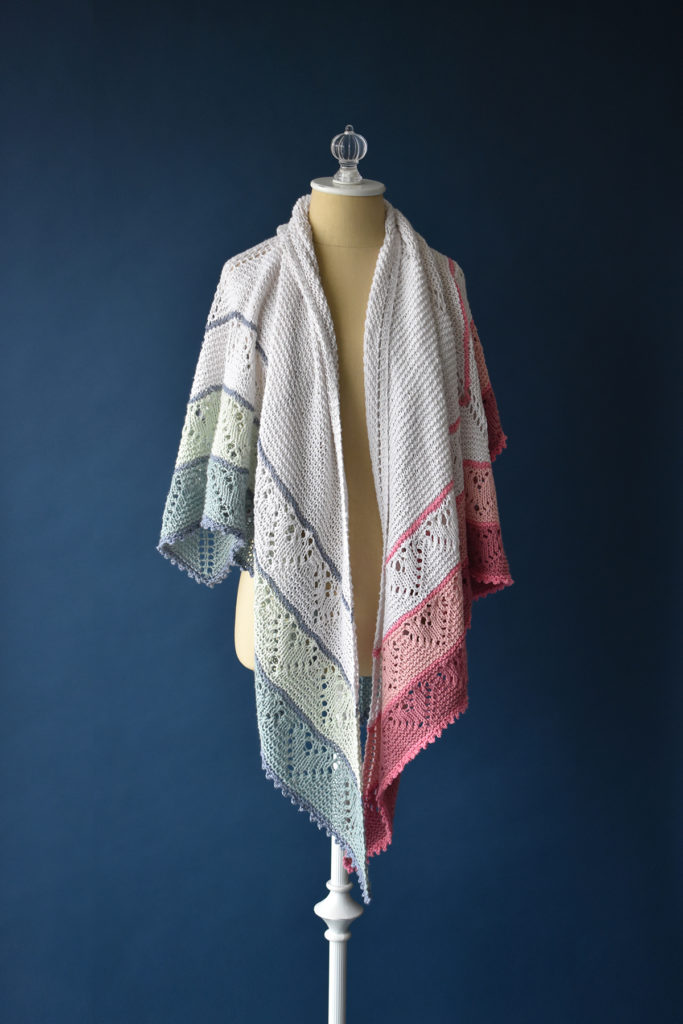
Seasons Greetings from the Universal Yarn Team! Today, we’re pleased to share a special free pattern with you for the Christmas season: the Carolina Holly hat (pattern link)! Holly – like poinsettias, mistletoe, and ivy – conjures images of the holidays. The spiky plant is evergreen and beautiful, and it was the inspiration for the Carolina Holly hat.
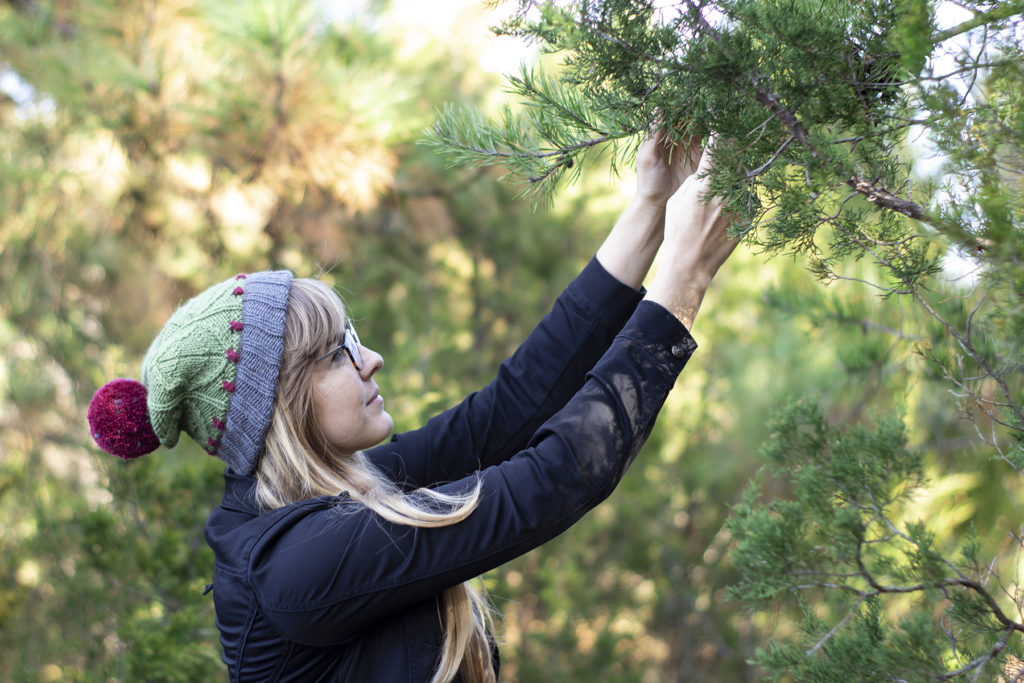
This free pattern is a load of fun to knit. It takes three skeins of Deluxe Worsted – and that’s enough to make two hats. Of our line of yarns, Deluxe Worsted might just be my favorite. It’s excellent for every type of project, creates long-wearing fabric, and perfectly balances softness with the crunch of pure wool that I love. Plus, there are so many colors to choose from. For this hat I chose Sangria, City Turf, and Slate, but there are so many shades of red, green, and grey in the palette. I encourage you to find the combination that leaves you feeling inspired! Prefer superwash wool? You’re in luck – our machine-washable Deluxe Worsted Superwash would work perfectly as a substitute.
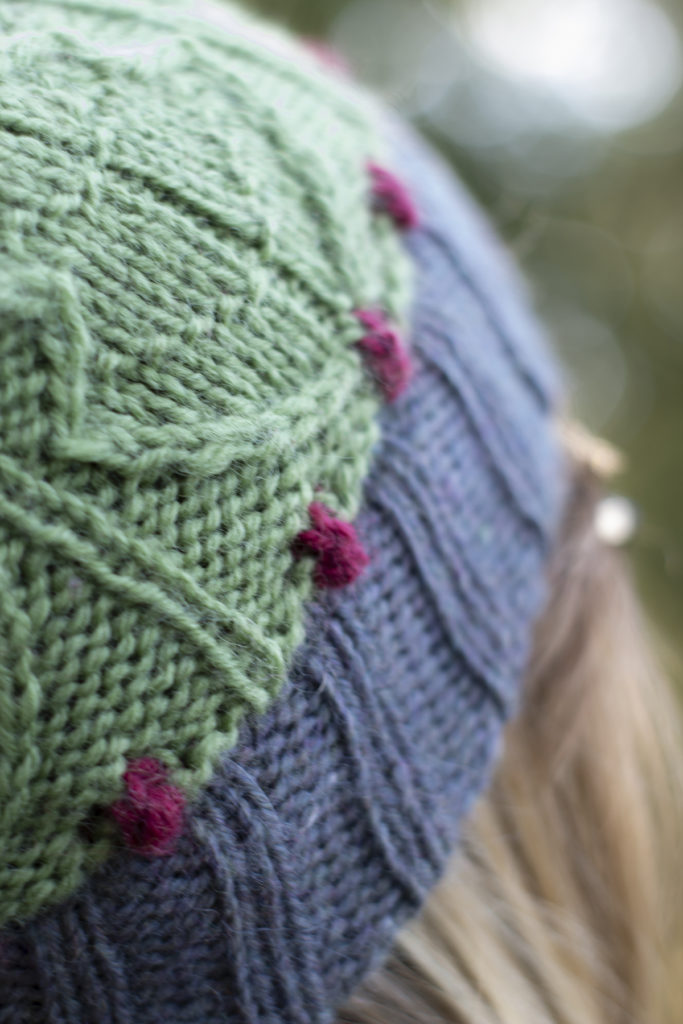
I wanted to give this hat some special touches. A double-thick brim ensures a warm and comfortable fit. A row of mini-bobbles knit in a rich red create little holly berries, and a large red pom-pom balances out the pop of red. Finally, to incorporate the grey used in the brim, the same color is used to add speckles to the pom-pom. The speckled pom-pom idea was not my own. I was inspired by designer Kiyomi Burgin, who has used this technique in her own work. You can find her post on speckled pom-poms here (link).
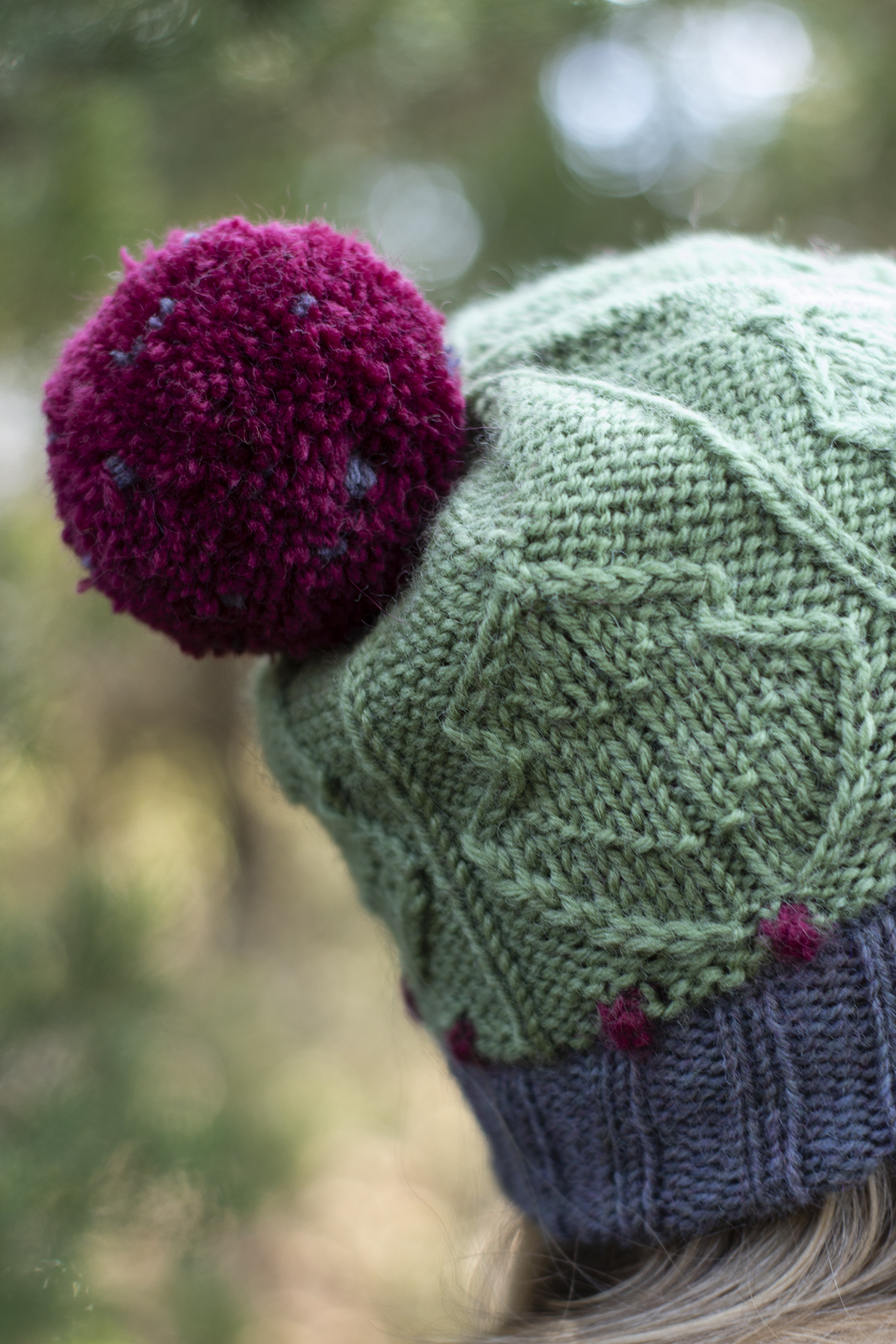
For your convenience, I’ve also created a tutorial. I hope you find it to be helpful! You’ll need to make your pom-pom before starting. If you haven’t done this before, don’t worry! You can find Amy’s tutorial on how to make pom-poms here (link).
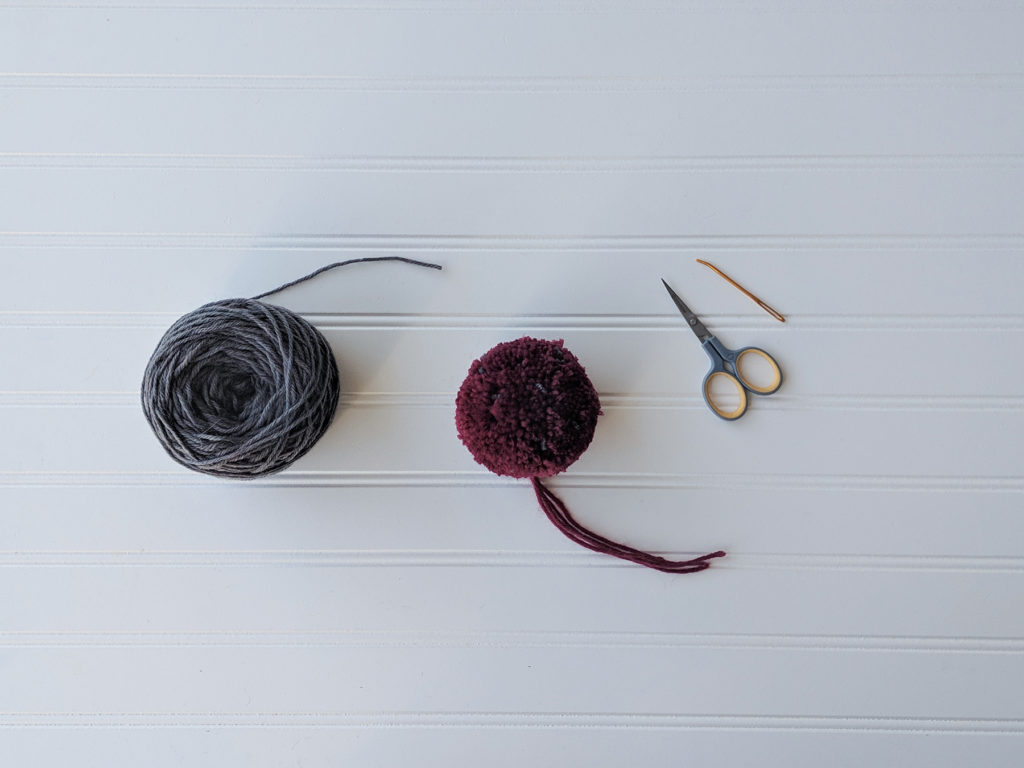
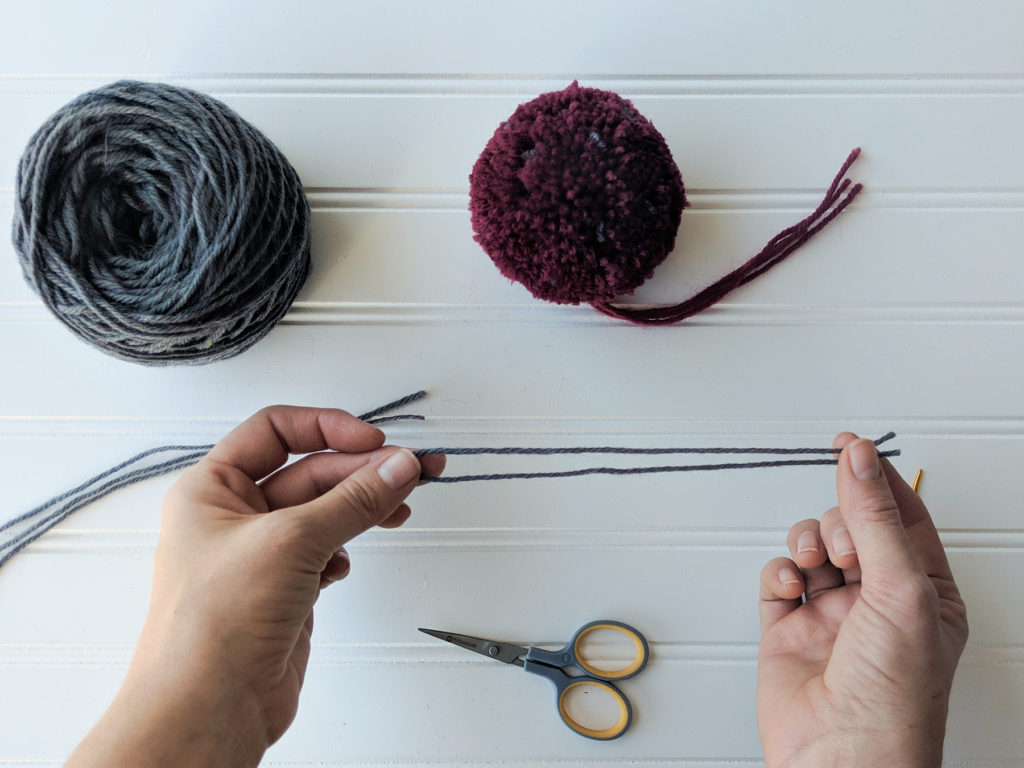
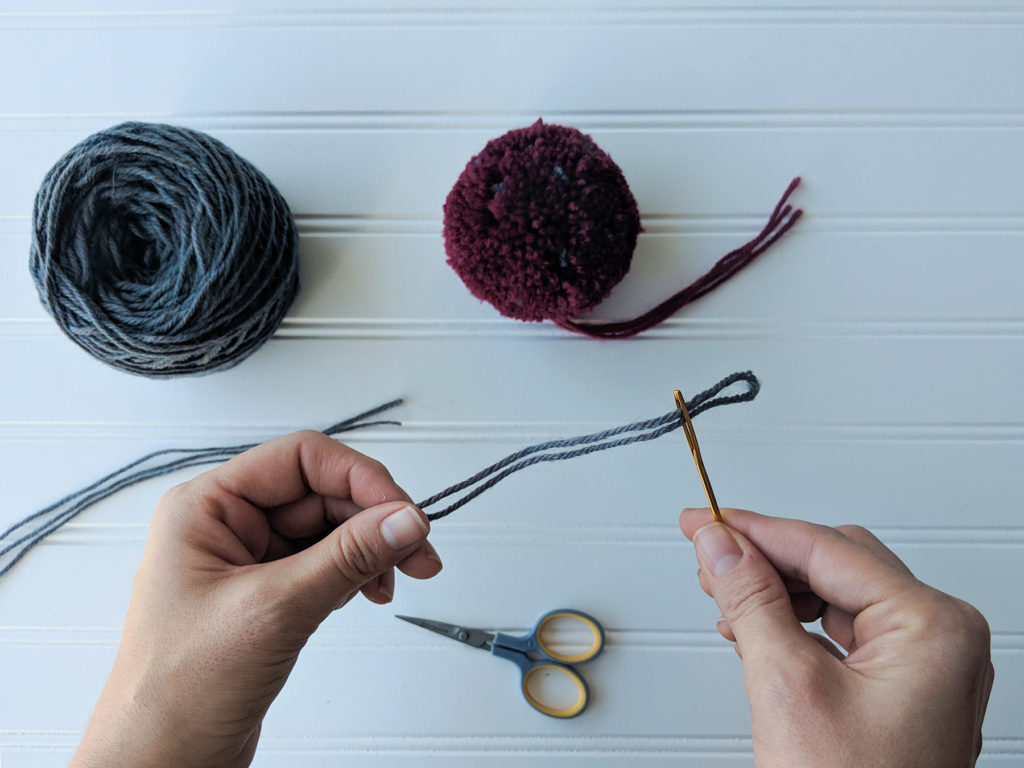
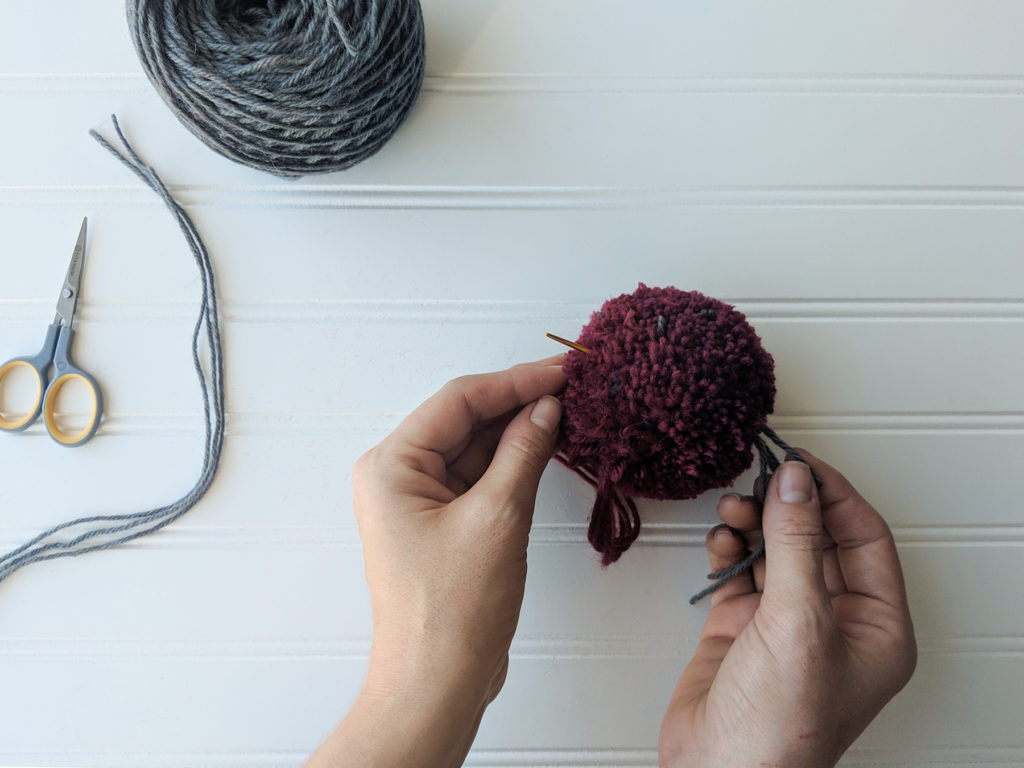
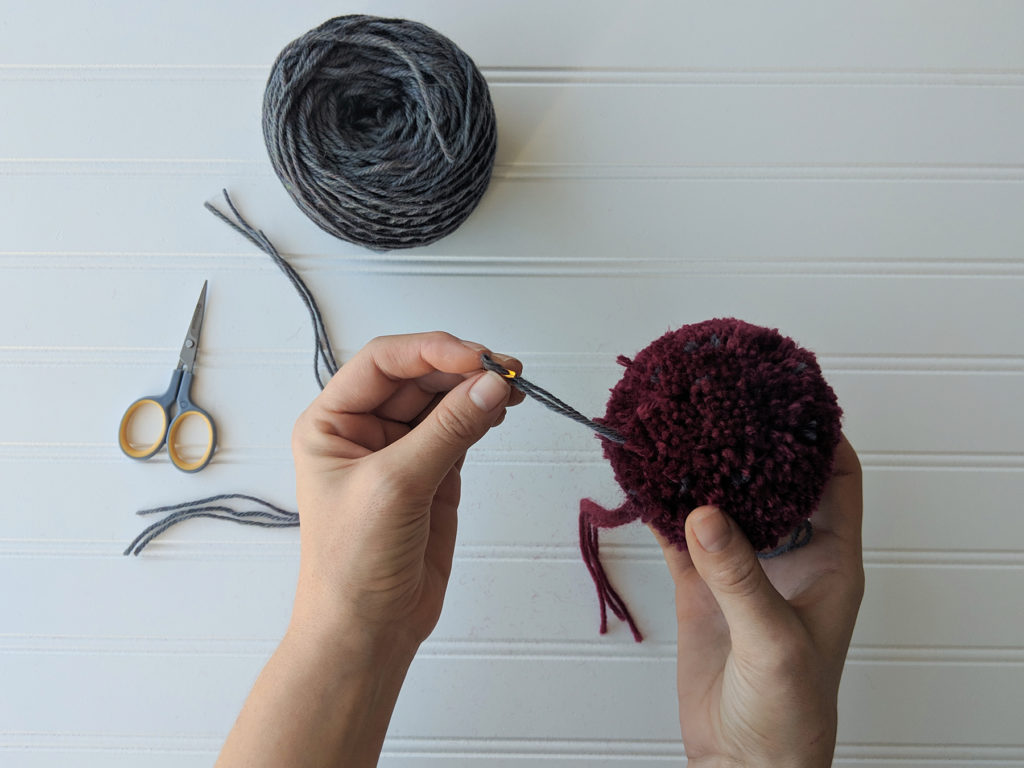
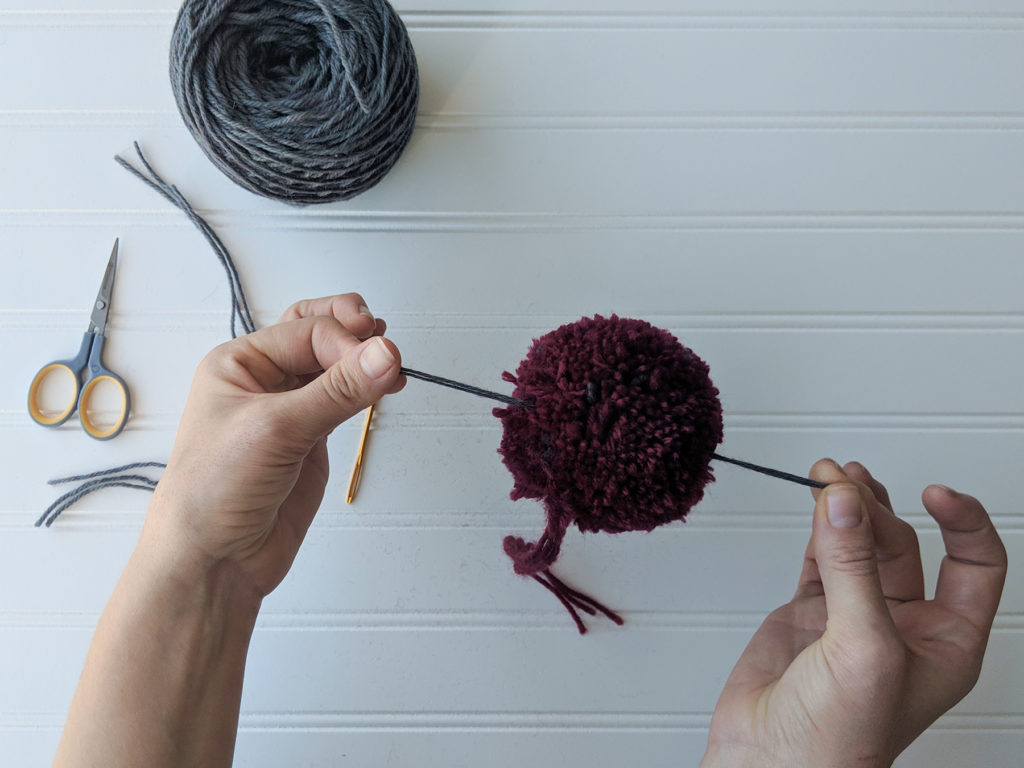
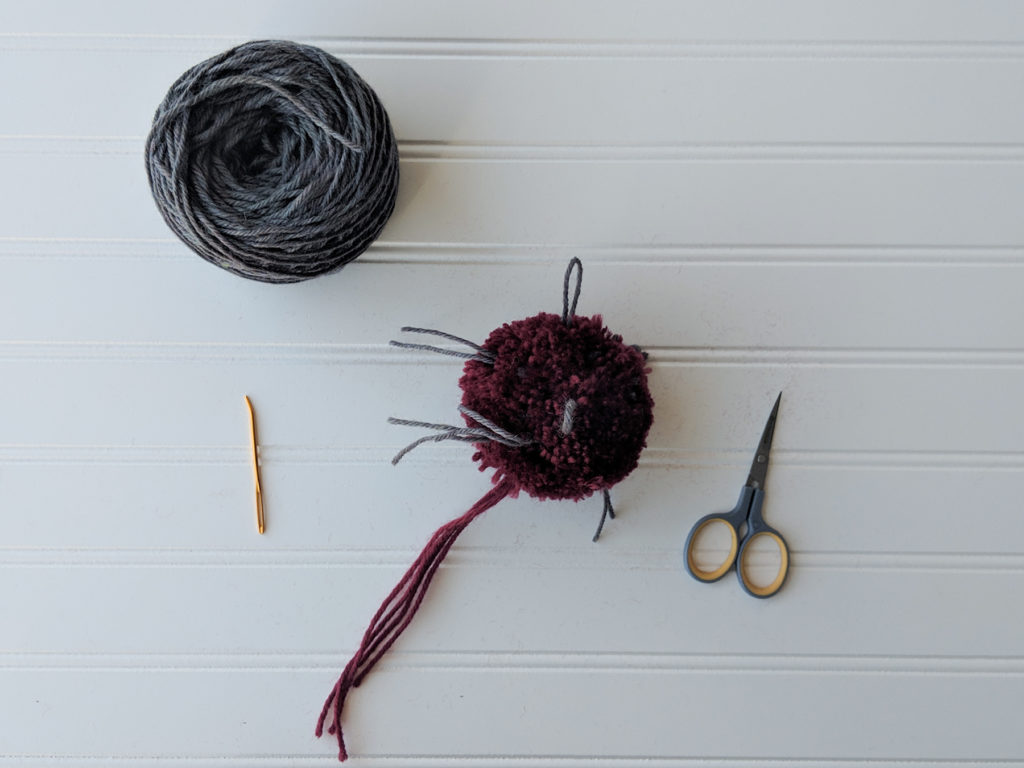
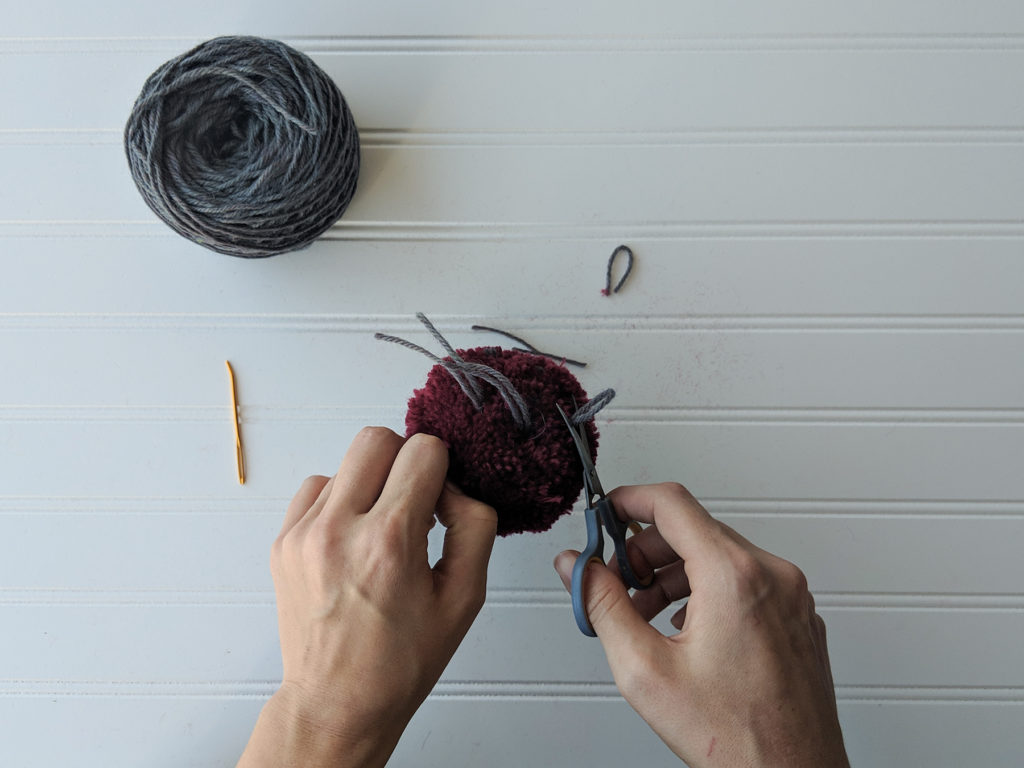
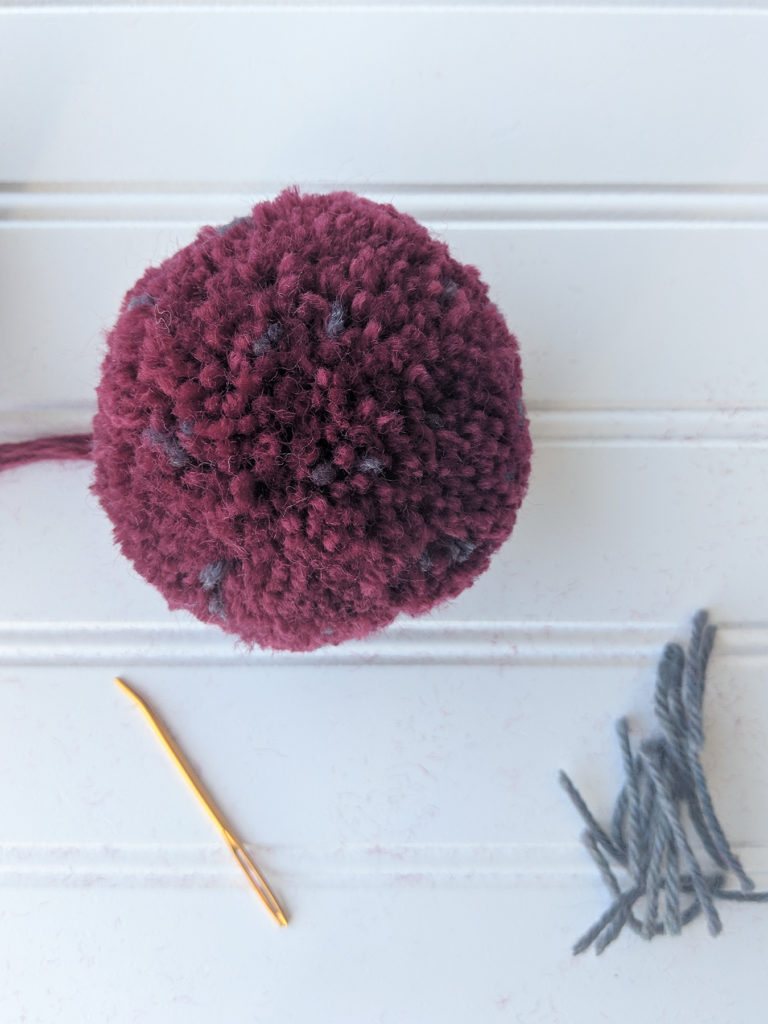
Today is Thanksgiving – since it is a national holiday in the United States, many of us will be spending the day with friends and family. Not only is today Thanksgiving, but November is also Native American Heritage Month. As such, I’m taking some time to talk about the incredible textile work of indigenous Americans.
Disclaimer: this is in no way a comprehensive overview. I am touching on only a few things. I could go on for much longer than I will, and I’ll happily include some information for further reading.
When I initially decided to use today’s post as a platform to touch on Native American Heritage Month, my brain went to knitting – it always does. I wanted to look into traditional Cowichan sweater knitting. Okay – I know we’re based in the US, and that today is a US holiday, but the first tradition I’d like to talk about originates in Canada. Anyway – these iconic sweaters originate from the Coast Salish people of British Columbia.

During the mid-nineteenth century, European settlers introduced domestic sheep and the craft of hand-knitting to the region. In an excellent overview of the history of Cowichan Knitting (pdf link), Margaret Meikle explains that native women skilled in handcrafts likely taught themselves to knit, working from samples available to them from the European settlers. Although the first Cowichan sweaters were solid-colored, Fair Isle sweaters influenced the colorwork these sweaters are known for early in the twentieth century.
In her book Knitting Around the World, Lela Nargi explains that the yarn used to create these sweaters as thick, handspun, single-ply, and naturally colored. These sweaters are as utilitarian as they are attractive. They are hardy and perfect to withstand cold, wet climates. They also feature beautiful patterning – each symbol with a story behind it.
In the children’s book, Yetsa’s Sweater (pictured above), author Sylvia Olsen demonstrates how the sweaters are personal. In the book, Yetsa’s grandma explains that the sweaters tell a story about family. I’d recommend checking out this book if you’re looking to share your love of knitting with young people in your life, but there is no shame in reading it as an adult!

If you now find yourself dreaming of a Cowichan-style sweater, I also discovered that Sylvia Olsen also wrote Knitting Stories, a book featuring Salish-inspired designs including Yesta’s Bolero – a perfect match for Deluxe Worsted Naturals (Pewter and Millet, anyone?). There are many interpretations of Cowichan sweaters on Ravelry. One in particular I like is Jane Richmond’s West Coast Cardigan – which she describes as being “inspired, in respectful admiration, by the Cowichan Sweaters that are abundant on Vancouver Island and are a tradition of the Coast Salish people” and clarifies that the design is not a real Cowichan sweater, only inspired by this traditional style. For her design, I’d recommend holding two strands of Deluxe Chunky Naturals together as one to obtain gauge.
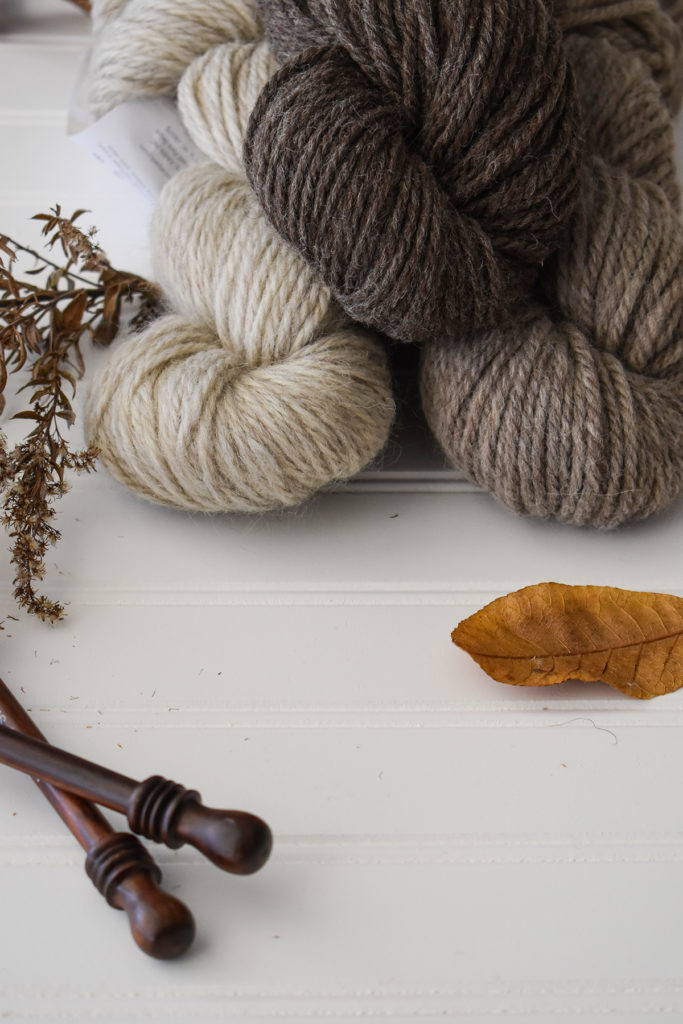
Next, I’d like to touch on weaving.

In Alaska, the Tinglits Chilkat people created beautiful Chilkat blankets. Made for movement, these blankets feature long-fringed borders that swayed beautifully with the dancers who wore them during ceremonies. The designs displayed on the blankets are the crests of the family or groups for whom they were woven. These weavings were made from mountain goat hair that was handspun and dyed naturally. The art of Chilkat blanket weaving was a dying craft, but Jennie Thlunaut (pictured above) is single-handedly credited for keeping the tradition alive.
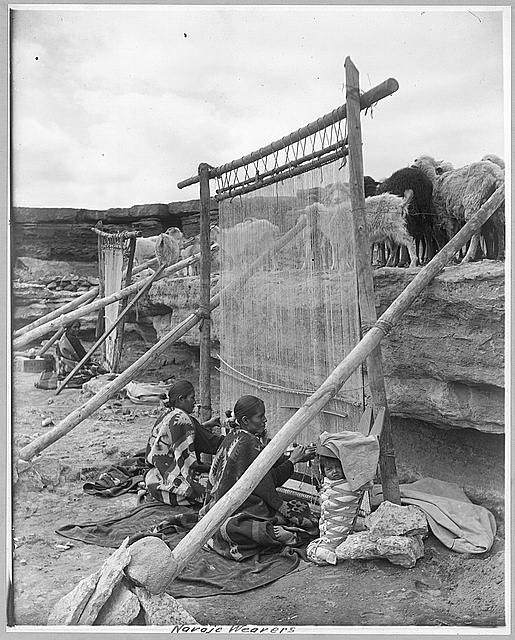
Based on my reading, it seems well understood that the Pueblo people were weaving centuries before the European invasion of North America. Their weavings were made from plant fibers, such as cotton and yucca, but it was not uncommon for human, dog, and wild animal hair to be incorporated, too. When Spanish settlers introduced Churro sheep to the region, wool began to replace cotton in textiles. When the Pueblo and Navajo people encountered one another during the seventeenth century, the Pueblo shared their knowledge of weaving with the Navajo.

Because the Navajo were largely nomadic, working with sheep and wool was well-suited to their lifestyle. The Navajo primarily created garments and blankets; however, in the late nineteenth century the political climate was harmful to the people and changed the purpose of their craft. This is when Navajo rugs became popular, and they remain that way today.
Danielle Hena, a curatorial intern at the Wheelwright Museum, explains that “stories, curiosities, and beauty are carried within each textile: stories from history, curiosities that will continue to be curiosities, and beauty that was transferred from a weaver’s vision to the viewers.” She perfectly sums up what makes the rich textile heritage of indigenous people so unique.
Feeling inspired? I know I am! I’d like to share an inspirational resource I uncovered while writing this post: the organization Adopt-a-Native Elder’s Rug Program. This organization facilitates a market for Navajo elders to sell their beautiful handwoven rugs. I thought this was pretty neat and I couldn’t resist sharing.
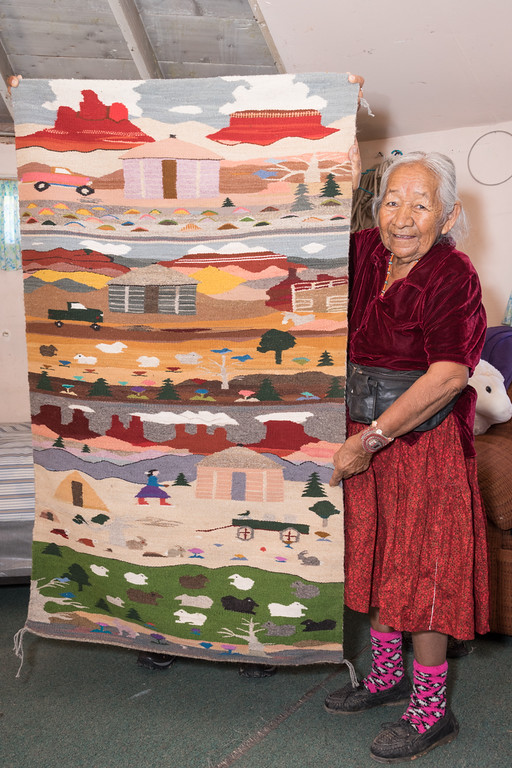
Still, if you want to make things with your own hands, there are plenty of resources out there! For example, Amy is an avid weaver and occasionally posts about the topic on our blog. You can find her weaving posts here (link). You may also be interested in a pattern – if so, check out the Sparkle Windows Scarf. This thing is gorgeous! Finally – check your local yarn shop for weaving classes. Our customers have shared projects woven using many of our yarns, and it’s such a lovely way to see it transformed.
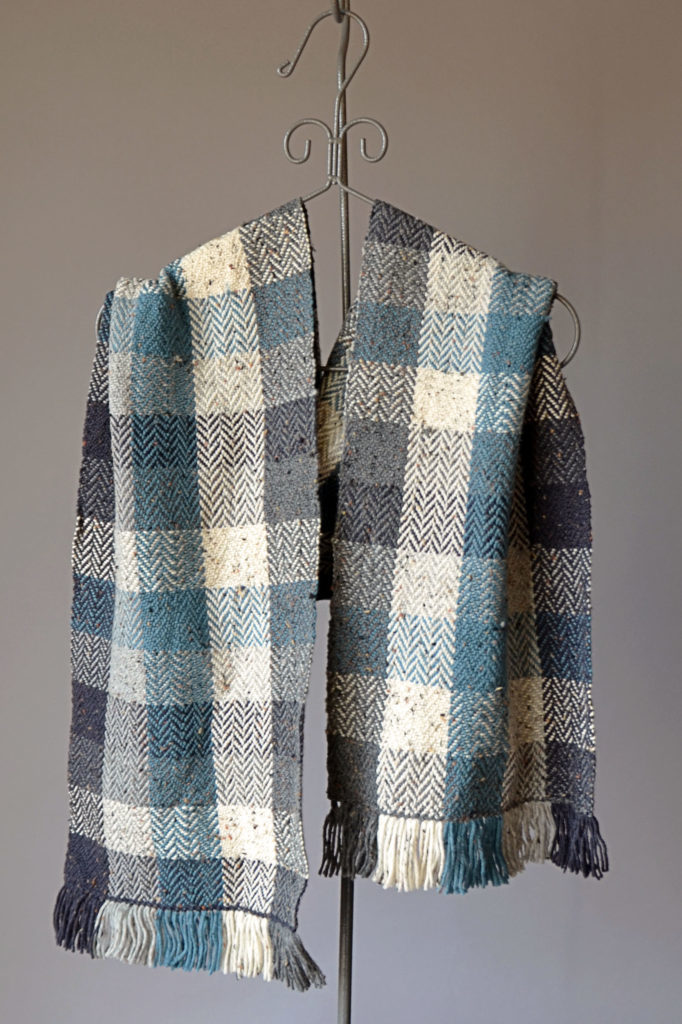
I hope you’ve enjoyed this post, have learned something from it, and feel inspired!
If you’re interested in reading more, here are the resources I’ve used for this post:
On Cowichan Knitting
Cowichan Indian Knitting by Margaret Meikle (link)
Knitting Around the World: A Multistranded History of a Time-Honored Tradition by Lela Nargi; (pp. 217-225)
Yetsa’s Sweater by Sylvia Olsen
On Weaving
For more information about Jennie Thunaut and Chilkat Blankets, I recommend exploring Masters of Traditional Arts, an ongoing interdisciplinary project produced by Documentary Arts focusing on the recipients of the National Heritage Fellowship (link here).
Unpacking a phrase: The Chilkat Blanket by Christy Christodoulides (link)
Three Southwest Weaving Cultures; adapted from Beyond the Loom: Southwestern Weaving Traditions exhibit, Colorado University Museum (link)
Wheelwright Museum Blog – Archives of Navajo Textiles (link)
This is part 12 in a 12 part series highlighting designs from our 12 Days of Winter, Series 2 Edition.
Day 12 – can you believe it? Today we reveal the final installment of the Universal Yarn 12 Days of Winter Kit Collections – Series 2! Say hello to the Solstice Shawl.
Can I be honest? I am really proud of this design – in my opinion, it’s one of my best designs and I sincerely hope you love it.
This isn’t a very complicated design, but what I feel proud of is the balance of simplicity and intricacy in the piece. This shawl combines cables, stripes, and intarsia. It is worked from tip to tip, starting and finishing with the same number of stitches (just two!). Finally, it’s finished with a very simple contrast color border.
Part of what makes this project special is the yarn used: Deluxe DK Tweed Superwash. I love this yarn. It’s rustic and the tweedy nubs add interest to every type of pattern – from simple garter to cables, lace, and stranded colorwork. (If you need convincing, just take a look at the recent collection in this yarn, Rustic & Refined).
I’m keeping this post short and sweet, but before I sign off, thank you’s are in order! Like last year we had a really wonderful time putting this collection together. It is a team effort, for sure. So thanks to everyone on our team for putting in so much hard work! And thank you so much for supporting our company, your local yarn shops, and for following our posts for this collection. We appreciate it so much!
Remember, you can find the 12 Days of Winter Kit patterns on Ravelry.
This is part 1 in a 12 part series highlighting designs from our 12 Days of Winter, Series 2 Edition.
We can hardly believe it’s already November. Knitting season is in full swing. Our needles and hooks are full of warm and woolly goodness. We’re preparing for the holidays – working tirelessly on special projects for friends and family. Here at Universal Yarn, we’ve also been working hard to create the second annual installment of a beautiful collection of wintry kits to welcome the season. So, at long last, we’re able to reveal the first of twelve special kits. Say hello to the 12 Days of Winter 2018 Collection!
Last year we kicked off the collection with a pair of socks. This year we’re thrilled to do the same. For Day 1 of the collection, we have Mistletoes.
I’m a big fan of stranded colorwork. It may take a backseat to knitting cables, but for some reason, I simply cannot resist a good pair of colorwork socks. The Mistletoes socks combine self-striping Adore Colors and Adore for a visually striking effect.
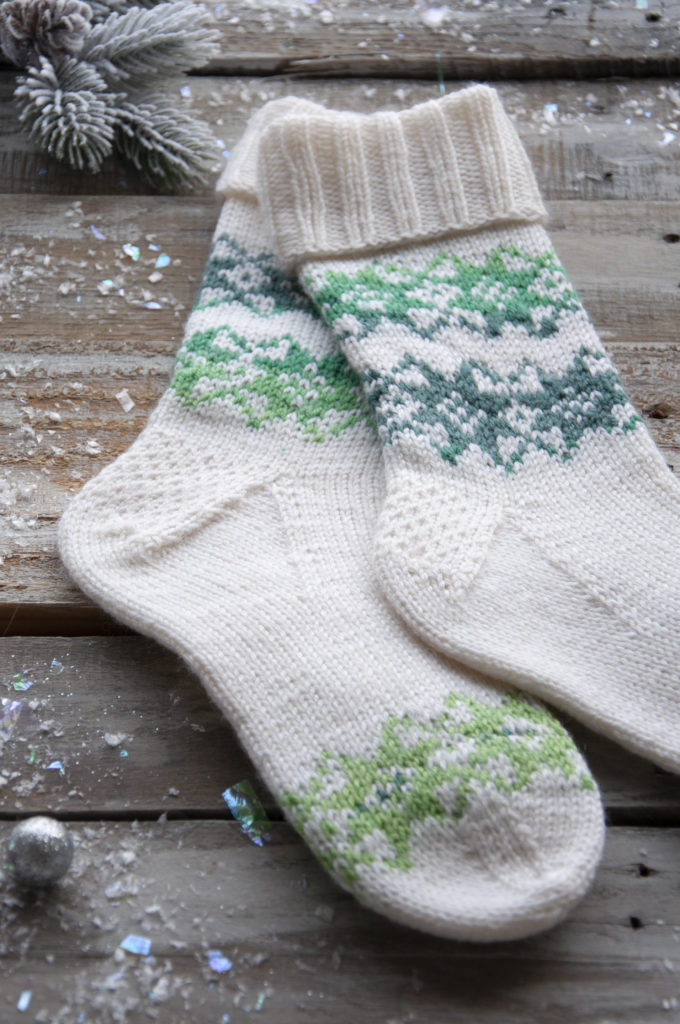
Despite the beauty of stranded colorwork, many knitters find themselves intimidated. Like everything else in knitting, once you’ve done it you realize how simple it really is. If you haven’t done colorwork before I want to empower you to get your feet wet – if you have, I want to encourage you to learn a bit more! Let’s get down to it! I’ve compiled a list of tips and tricks to help you along the way.
Get comfortable with charts.
This is something else that can intimidate knitters, but it’s essential for colorwork. I’d actually argue that colorwork is an excellent introduction to reading charts since you’re usually only looking at colors. Last year I included some tips and tricks for understanding charts. You can find the full post here (link).
Manage your yarn.
Managing your yarn well when knitting colorwork can make the process so much more enjoyable. I recommend keeping each ball of yarn on a separate side to prevent unnecessary, annoying twists and tangles.
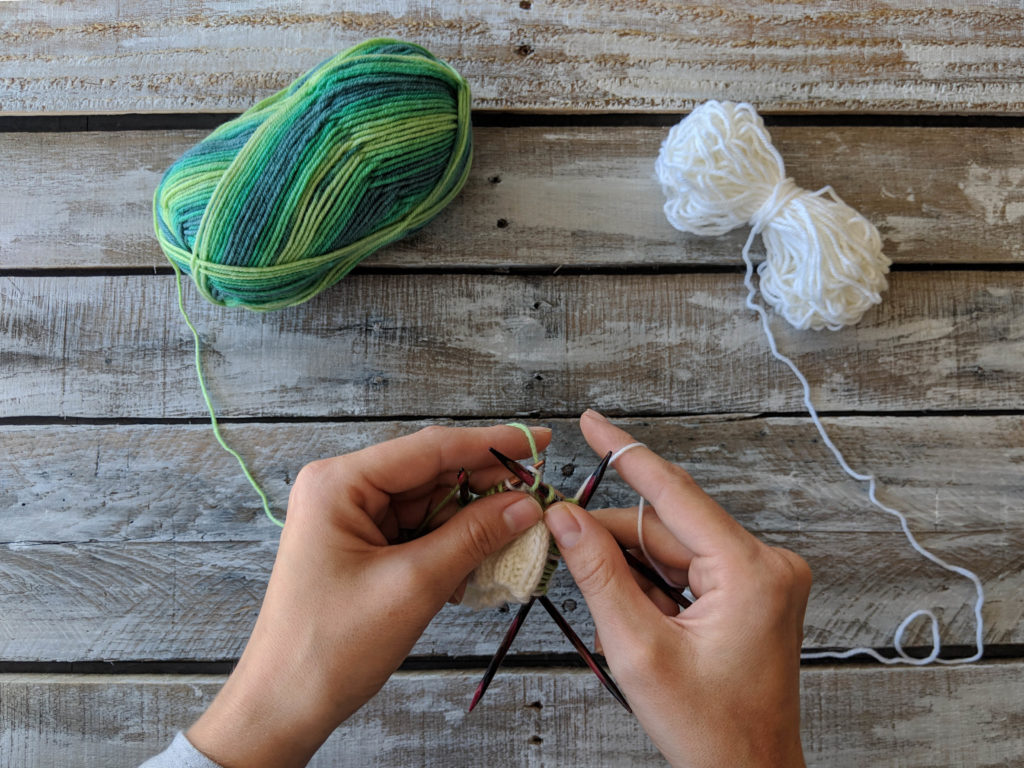
Taking care of tension.
This is probably the most important aspect of stranded knitting. To achieve the results you want, your tension should be even. Why? Floats. Since you’re carrying two strands of yarn across the back of your work, one of the yarns will always be “on hold” while you work stitches with the other color.
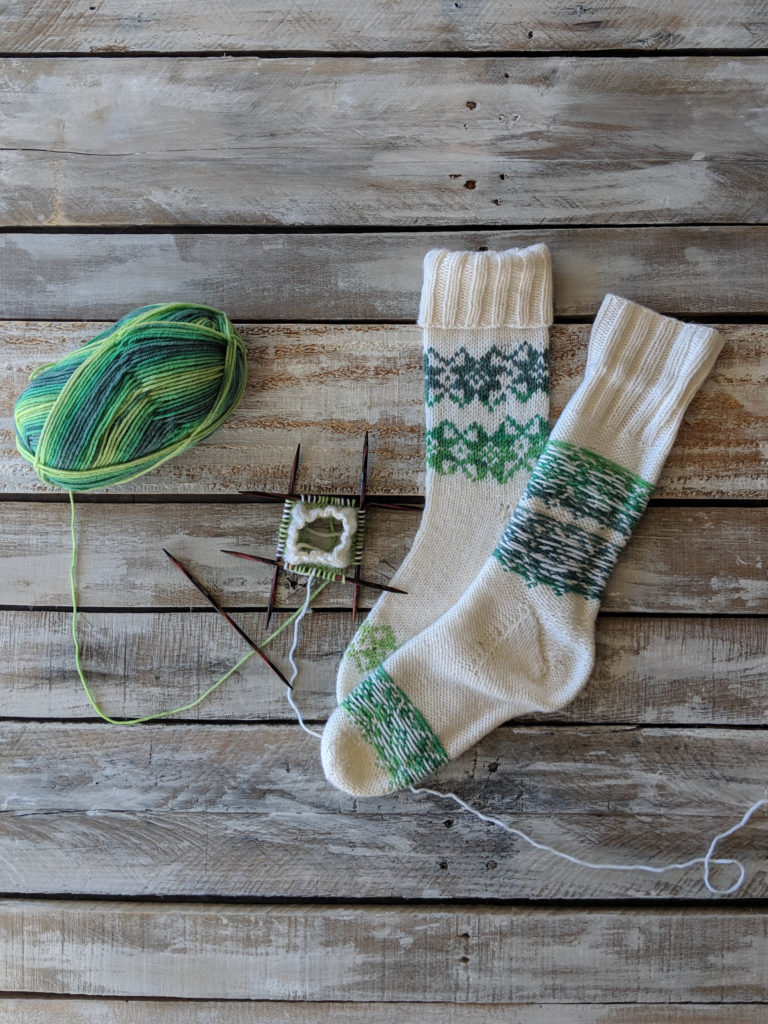
If your floats are too tight, the fabric will pucker. Puckered fabric is considerably less elastic and will appear a bit bumpy – taking away from the beautiful patterning you worked so hard on. Not to worry, though! There are ways to ensure that your floats are even and not too tight. I’m personally a pretty tight knitter, so I use these techniques, too.
Use larger needles. First things first: swatch, swatch, swatch! Once you do, you’ll realize that your gauge in stockinette stitch is different than your gauge in stranded knitting. To combat the difference, changing needles helps a lot. Expect to use needles that are one to two sizes larger for stranded portions of your knitting. Most patterns, including the Mistletoes, will direct you to do this. However; that’s not always the case. Keep this in mind whenever you’re knitting colorwork.
Turn your work inside-out. This is exactly what it sounds like. By turning your work inside-out, your floats will be facing you while you’re knitting. It doesn’t change the actual knitting at all, but it’s a simple way to manage your floats. By carrying your floats on the outside, you’re allowing them a bit more room. This trick is simple, easy, and effective.
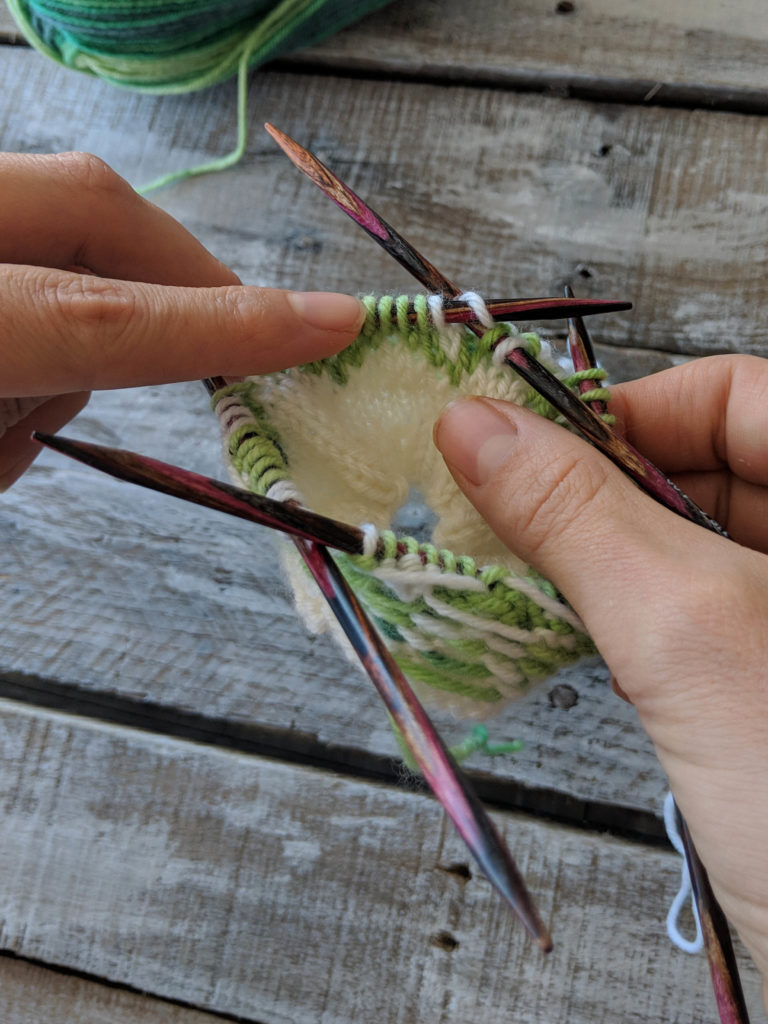
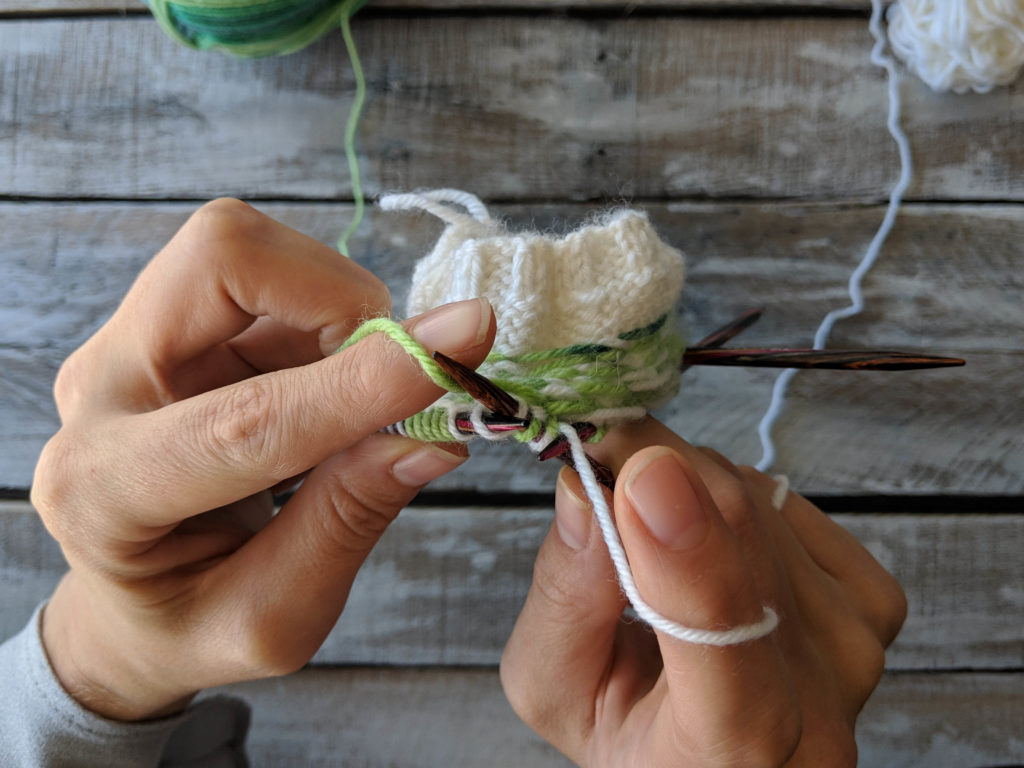 Notice that the wrong side of the fabric is facing outward.
Notice that the wrong side of the fabric is facing outward.
Gently stretch your work. Chances are that you’ll sometimes have a stitch that’s a bit odd – perhaps a bit too tight or a bit too loose. You can rectify the issue by occasionally stopping to give the fabric a gentle stretch. Don’t be overzealous as that can cause stitches to get more uneven. A little goes a long way.
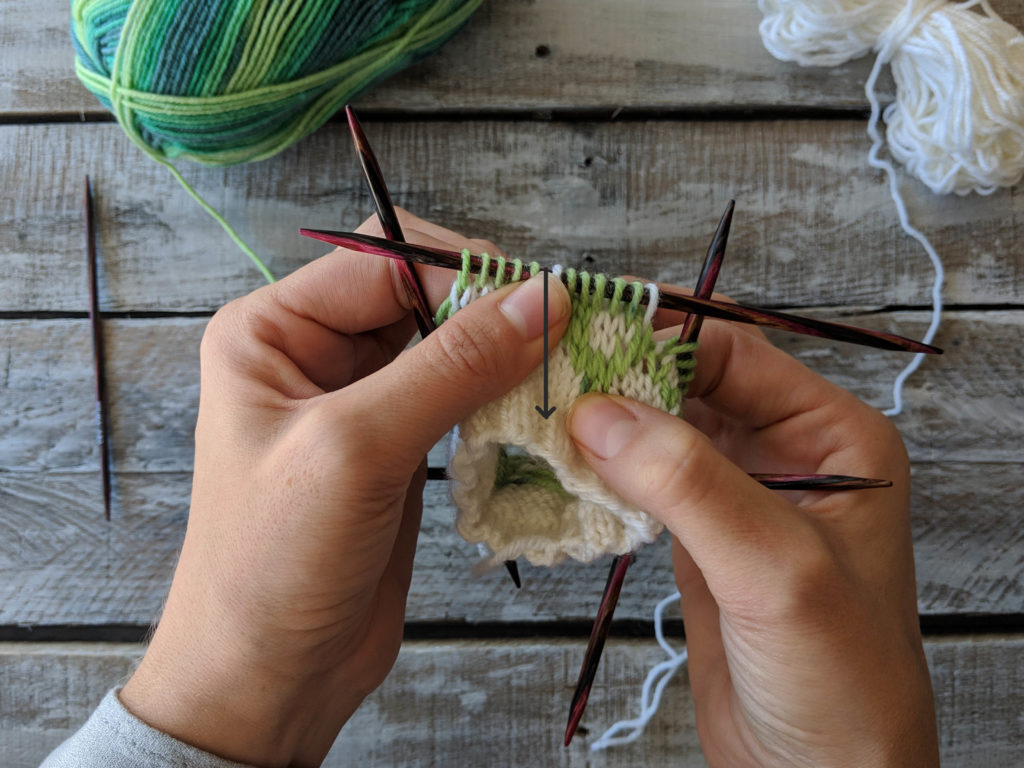
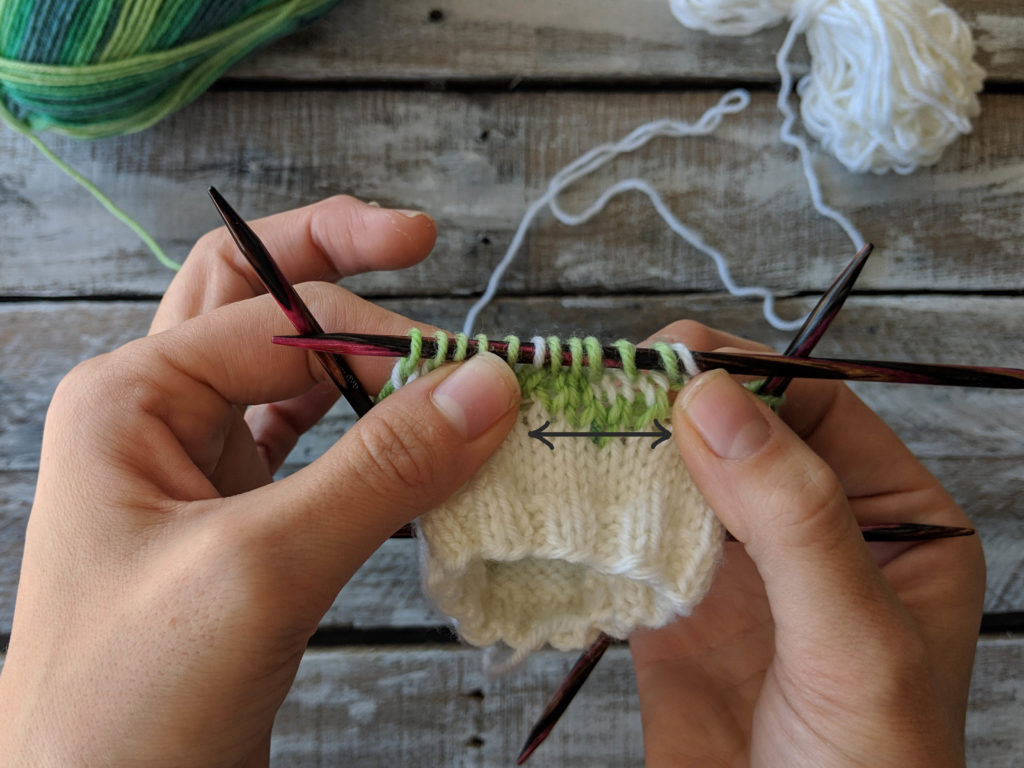
Manually even out oddball stitches. Like I’ve mentioned above, there are instances where a stitch looks a bit wonky. If a gentle stretch doesn’t help you can manually pick the stitches around it to try and even things out.
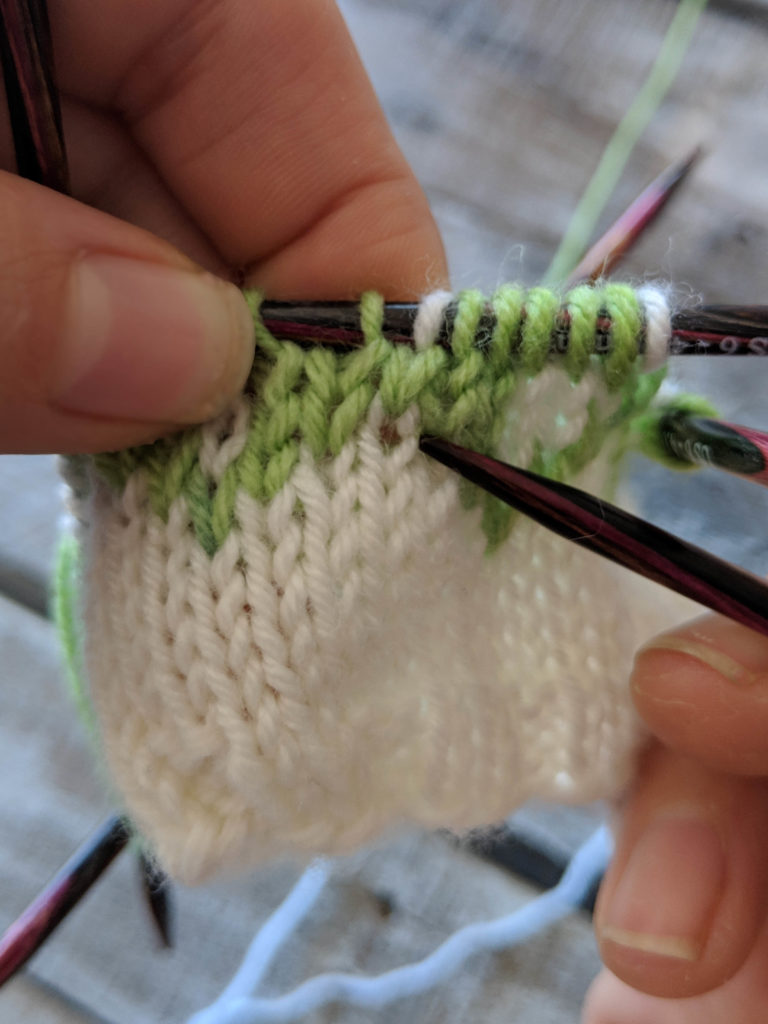
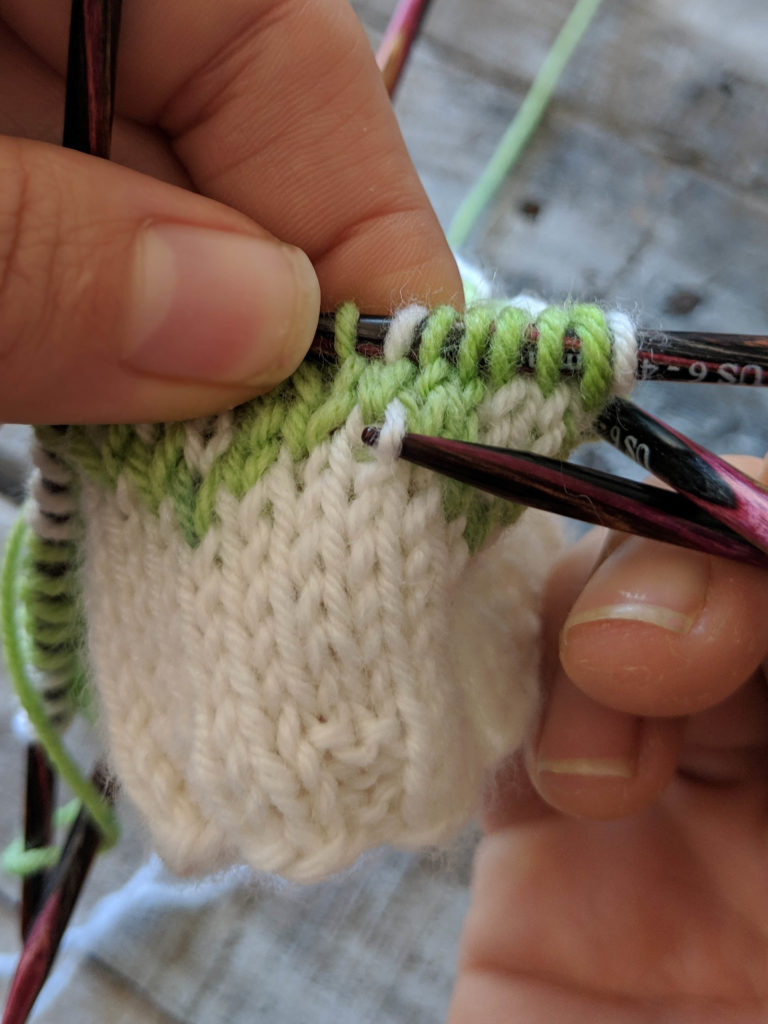
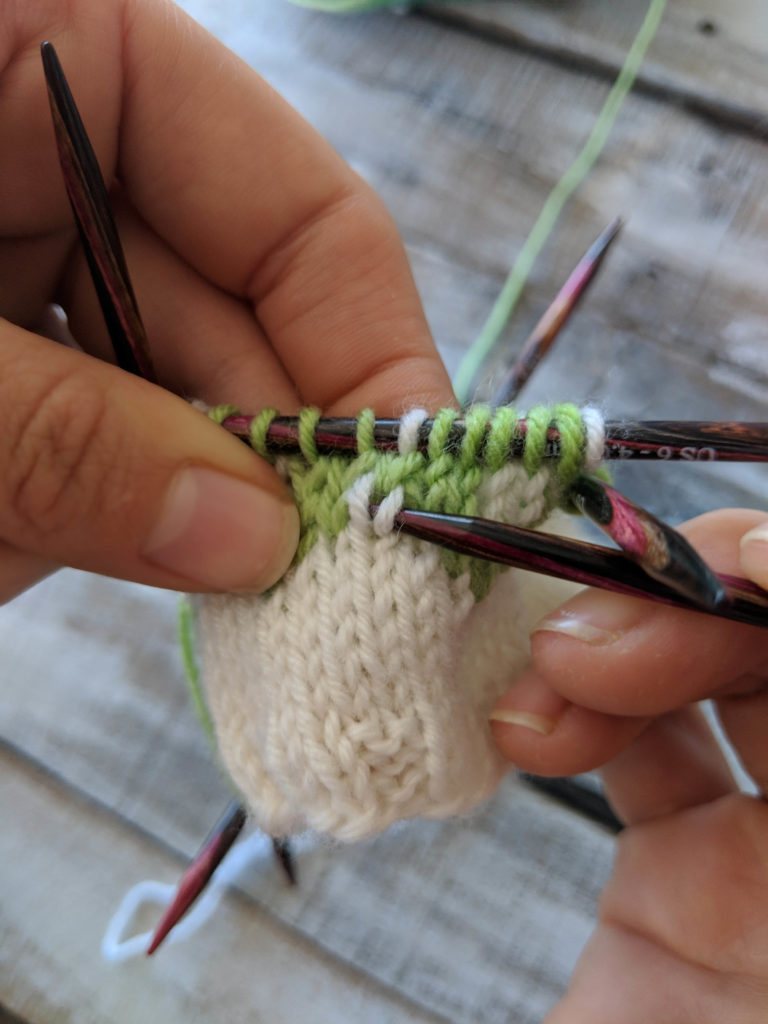

Block it out! Blocking is magic. The process evens out stitches, so when you finish your work be sure to block it! Once the yarn blooms it will fill up any negative space in your fabric allowing your colorwork to shine! Just be sure to follow the care instructions on your yarn label so that you don’t unintentionally damage the fabric. Side note: we have a post to help you understand yarn labels, too. Find it here (link).

That’s it! I hope these tips and tricks will help you as you knit the Mistletoes or any stranded colorwork. Remember, you can find Series 2 of the 12 Days of Winter Kit patterns on Ravelry.
Perhaps my favorite collection we’ve released for fall so far is Light & Shadow. It’s a collection of gorgeous, incredibly wearable patterns knit in anti-pilling Uptown DK.
A lot goes into planning our pattern collections, and it’s always so exciting to see designs develop. Amy and I begin with a mood board. Then we move on to creating rough sketches. You can see a few of mine from our recent collections below:

Naturally not every sketch makes the final collection. Amy and I work on numerous ideas separately, then we meet to share our ideas, select the designs that will be a part of the collection, and choose colors. Then we get hard to work on making these ideas a reality.
So, which designs made the final cut for Light & Shadow?
I have three designs in the collection. First up: Crossroads.
If I had to choose a favorite, this might be it. This design started with a bold cable from Norah Gaughan’s Knitted Cable Sourcebook. I didn’t want to just slap the pattern onto a sweater. I opted for a relaxed, cozy fit with drop shoulders, garter ridges, a split hem, and understated bishop sleeves.
The sleeves sit at bracelet length on our fantastic model, Jarin, however; it’s super simple to lengthen them as the shaping occurs just before the cuff.
Next, we have Northbound.
I wanted to create the perfect, infinitely wearable turtleneck. I know not everyone loves turtlenecks, but I sure do! Northbound was initially imagined as a proposal for a print magazine before I started working at Universal. I loved it, so I held onto the idea – the Light and Shadow collection seemed to be a perfect match.
Northbound has some of my favorite design elements: set-in sleeves, saddle shoulders, seed stitch, and cables. If you love a simple design with thoughtful details, this pattern is for you.
My final design is perhaps the most unique: Topography.
Topography features sculptural welts that move diagonally across the sleeves. The effect is simpler to construct than you might expect.
The sleeves feature traveling twisted stitches that are used as a guide to creating the welts. After you’ve knit the sleeves, stitches are picked up stitches along the legs of the twisted stitches. Then you simply knit and graft. Easy-peasy. Not a fan of the welts? Just stick with the twisted stitches and you have a simple wardrobe staple.
It’s that time of year again!
The team is in Cleveland at the National Needlearts Summer Show, setting up booth 1032! We’ve got a lot of brand new things to share with our LYS friends, so we thought we’d tease folks a little with a glimpse of what we’re bringing.
Of course, we don’t want to give too much away. If you’re at the show, swing by booth 1032. We’d love to see you. Everybody else… stay tuned – there’s lots of good stuff on the way!